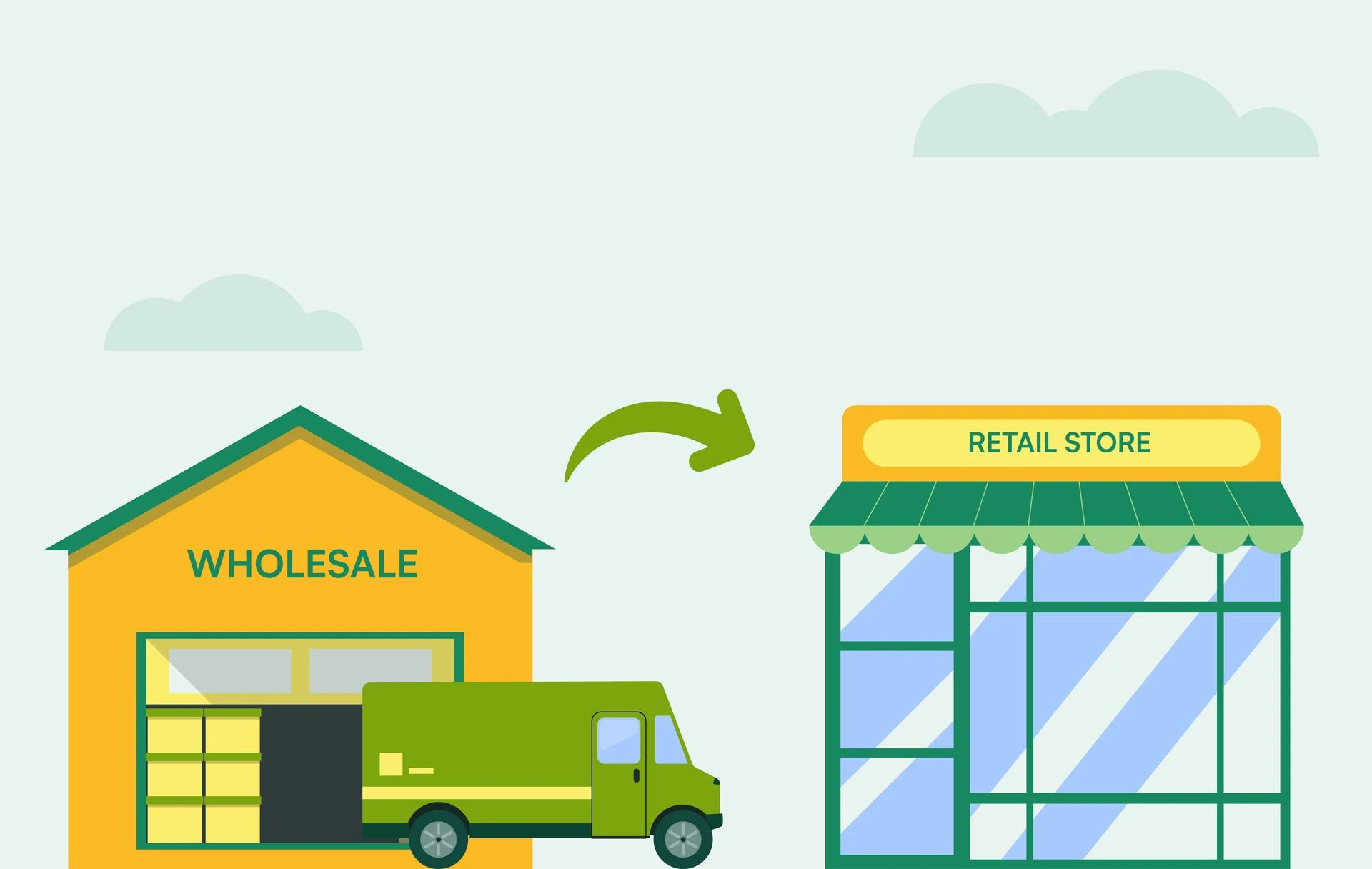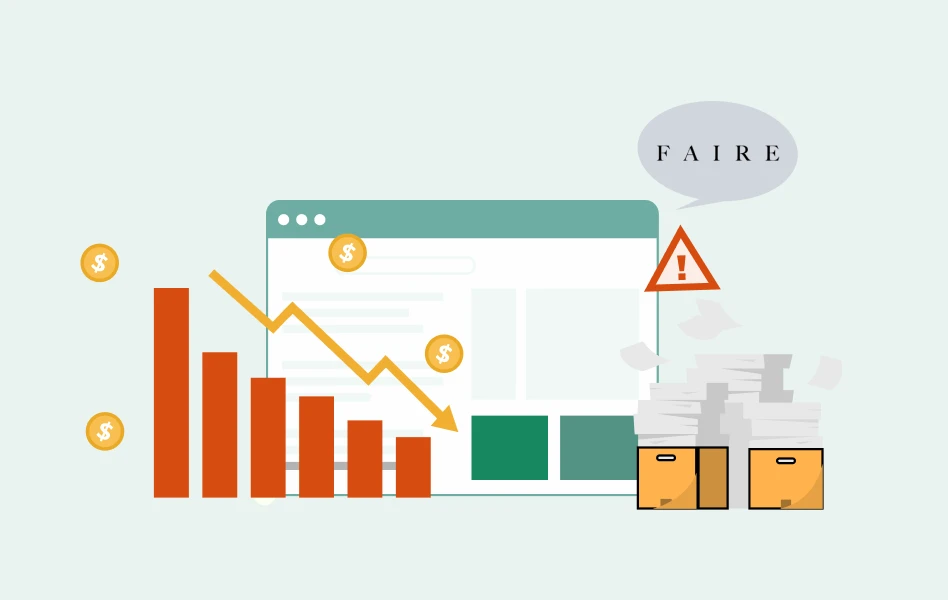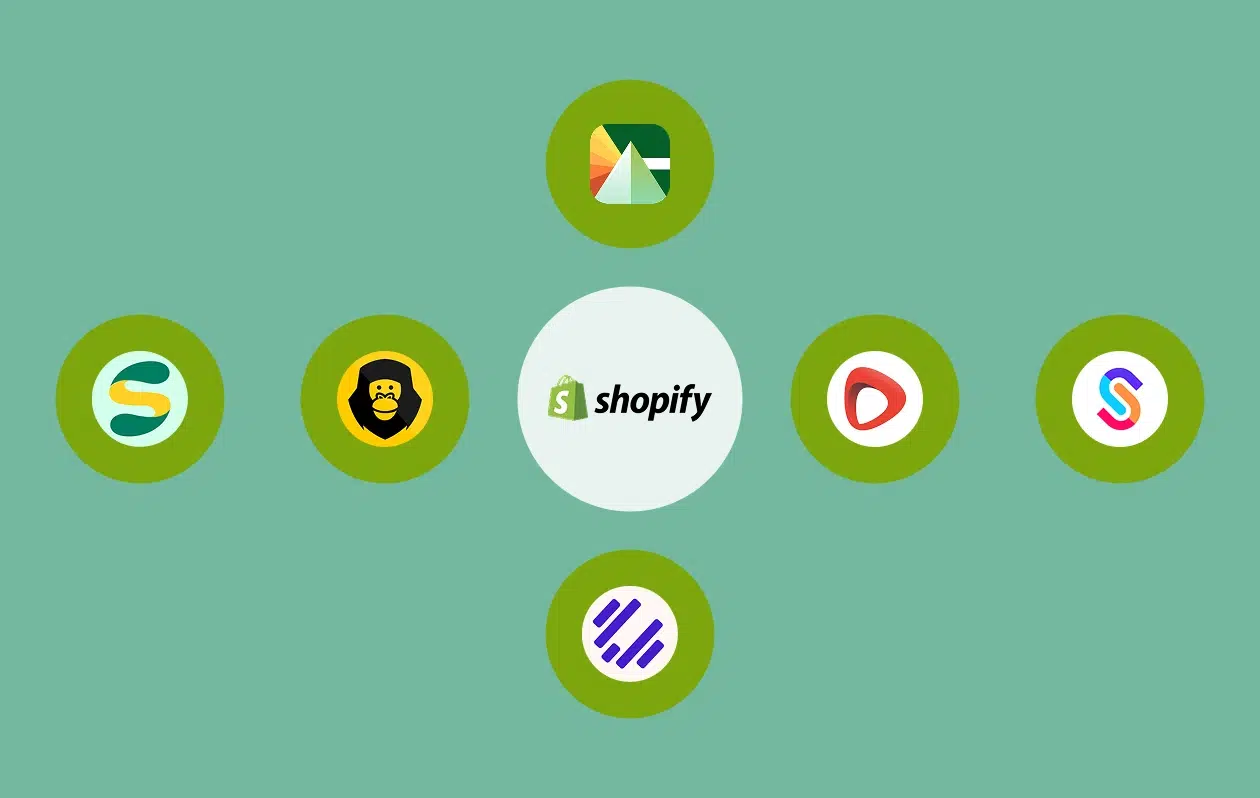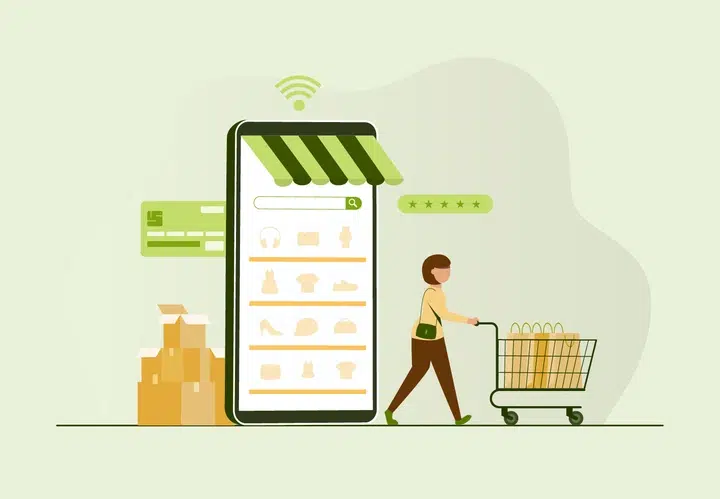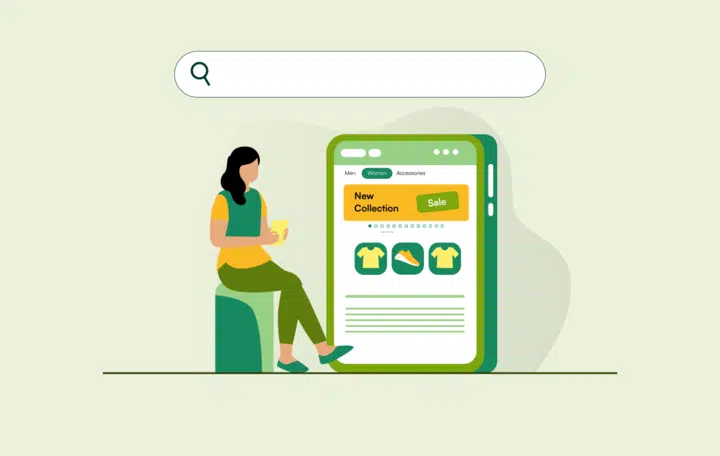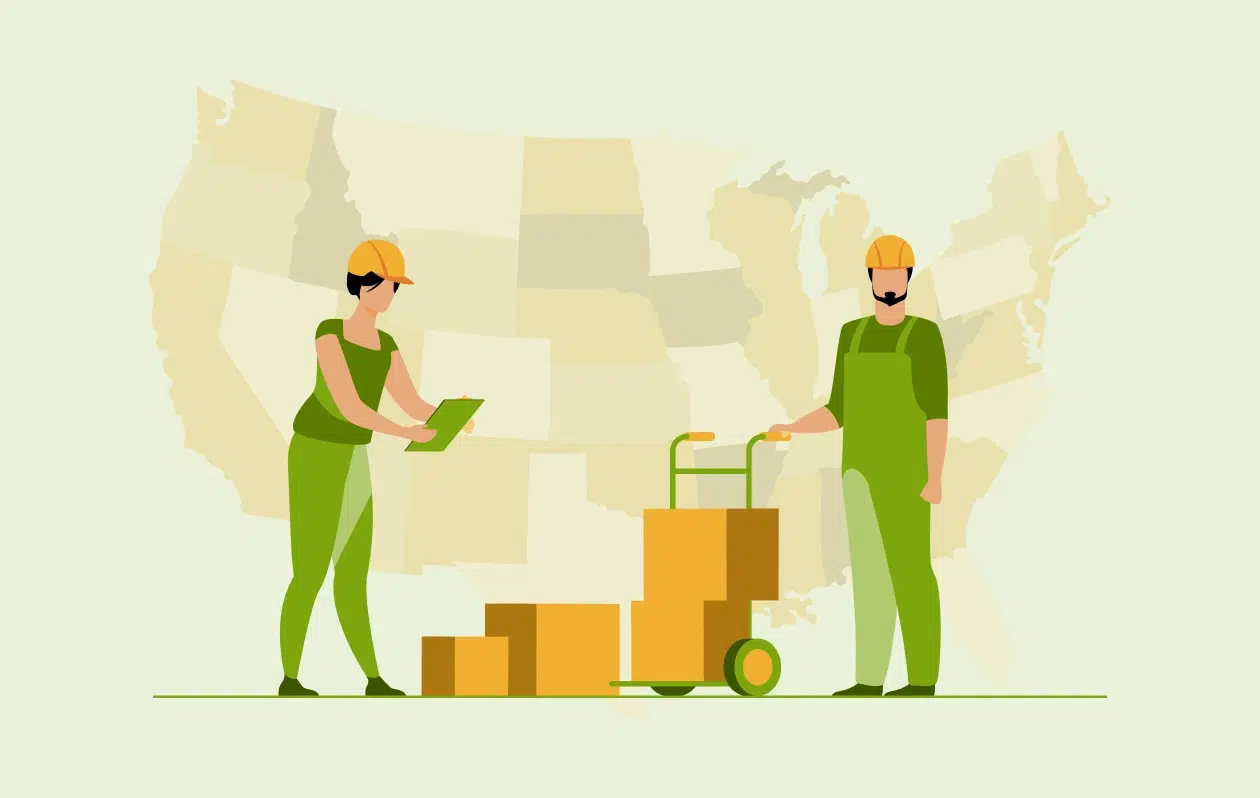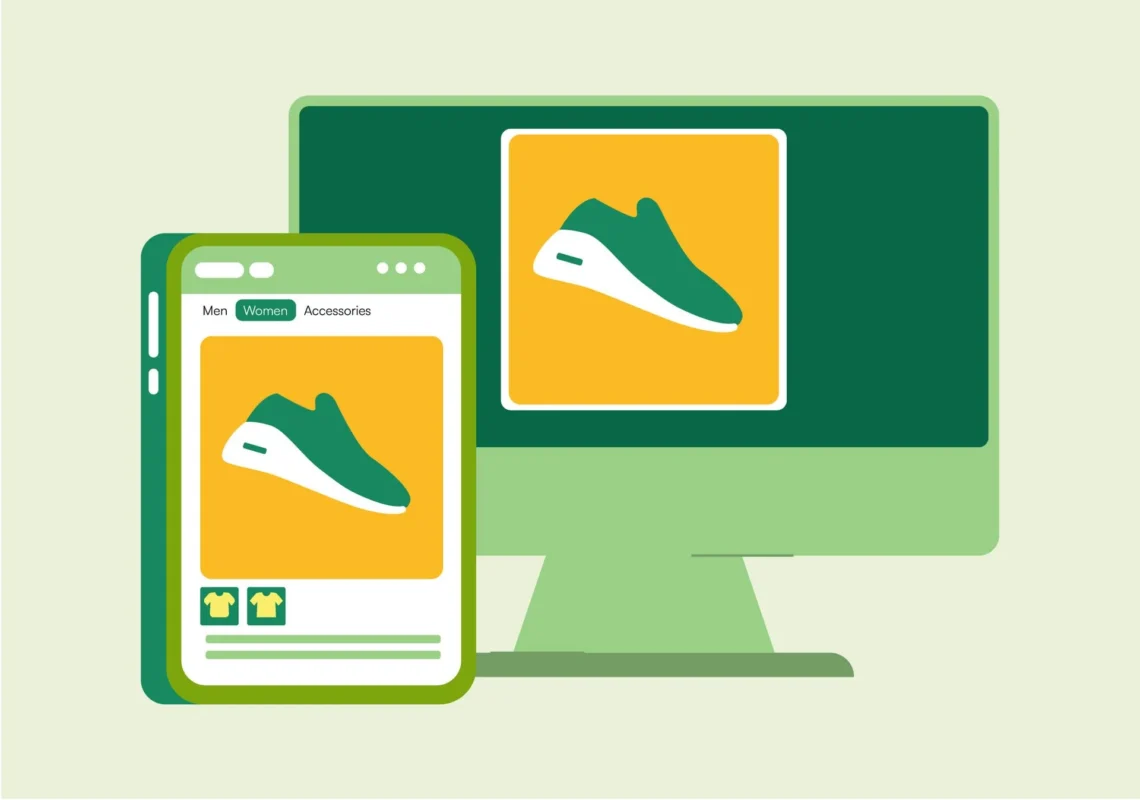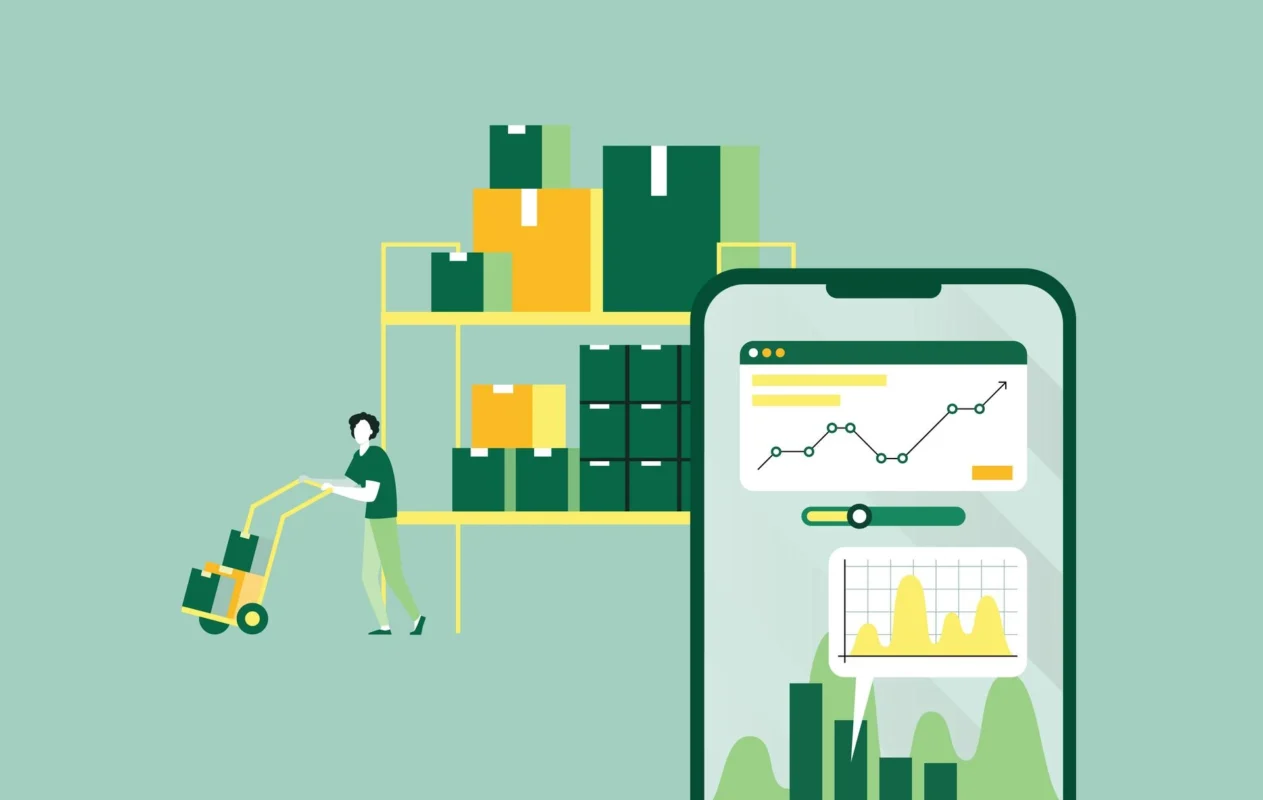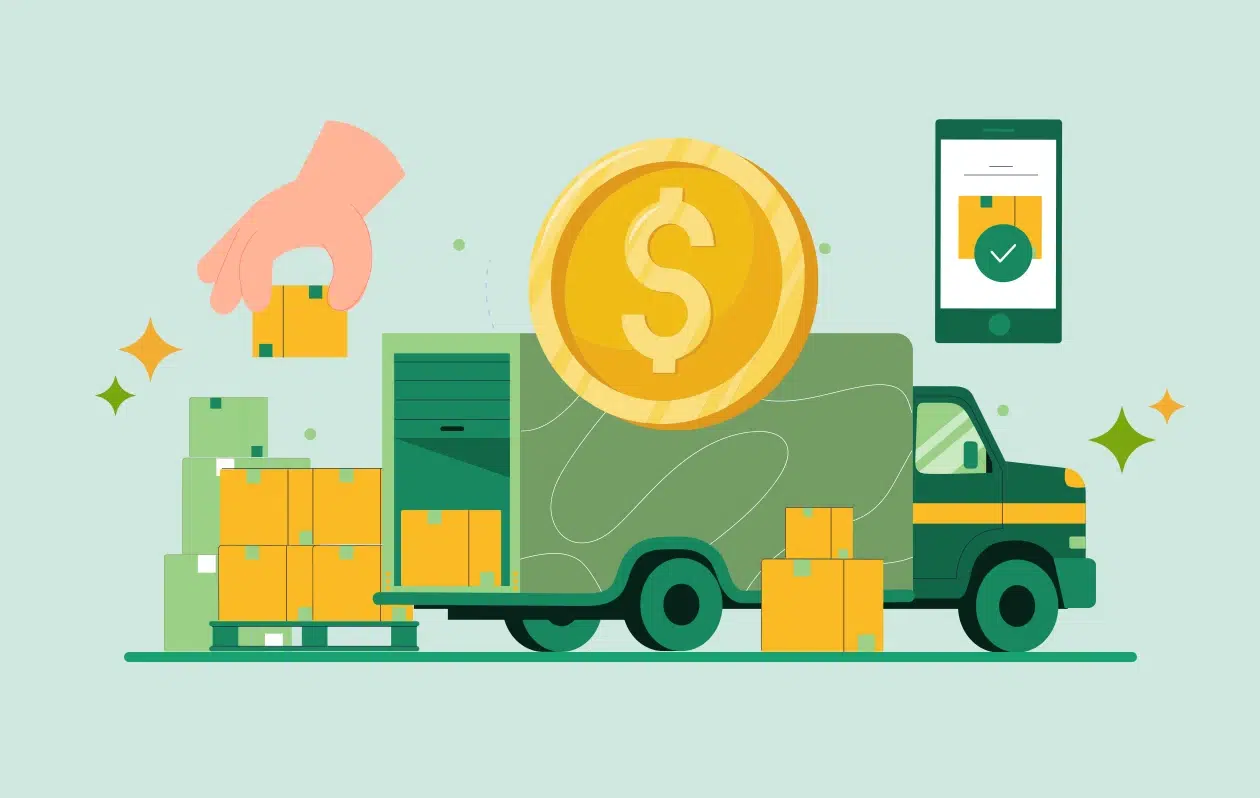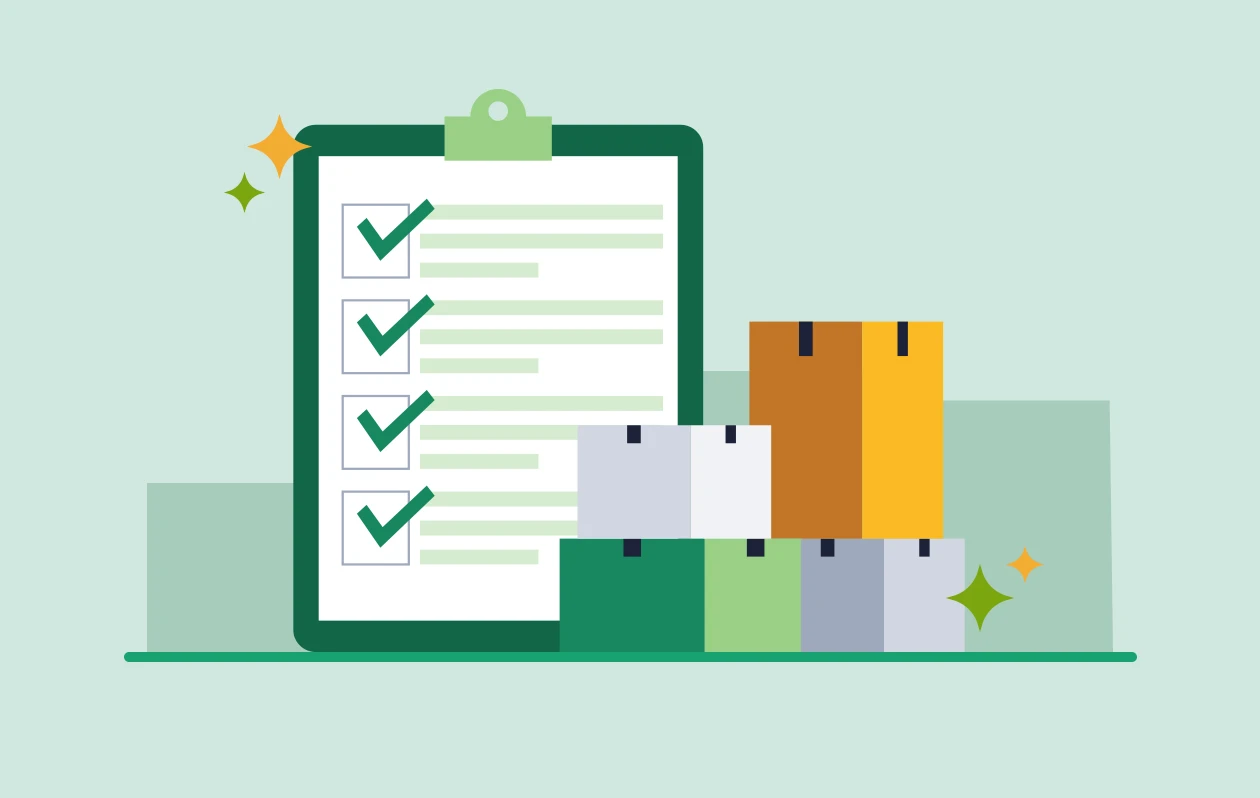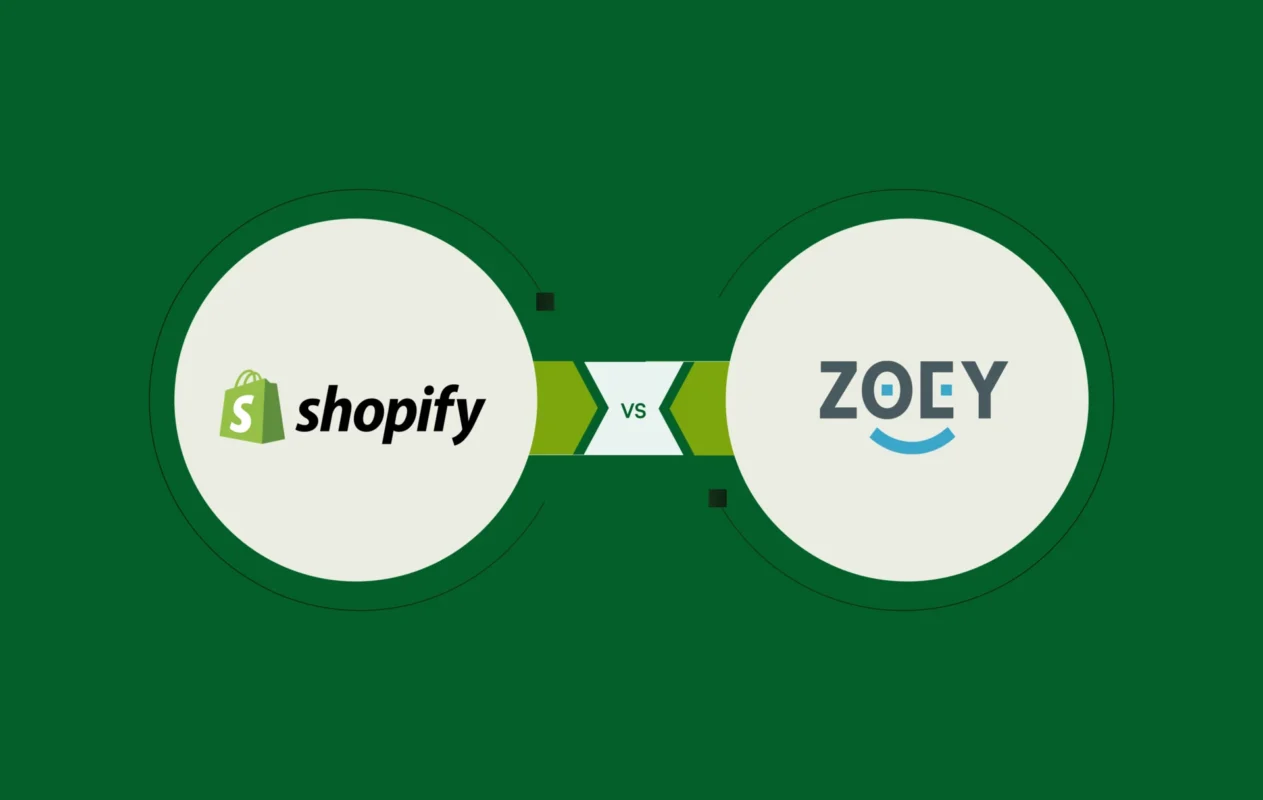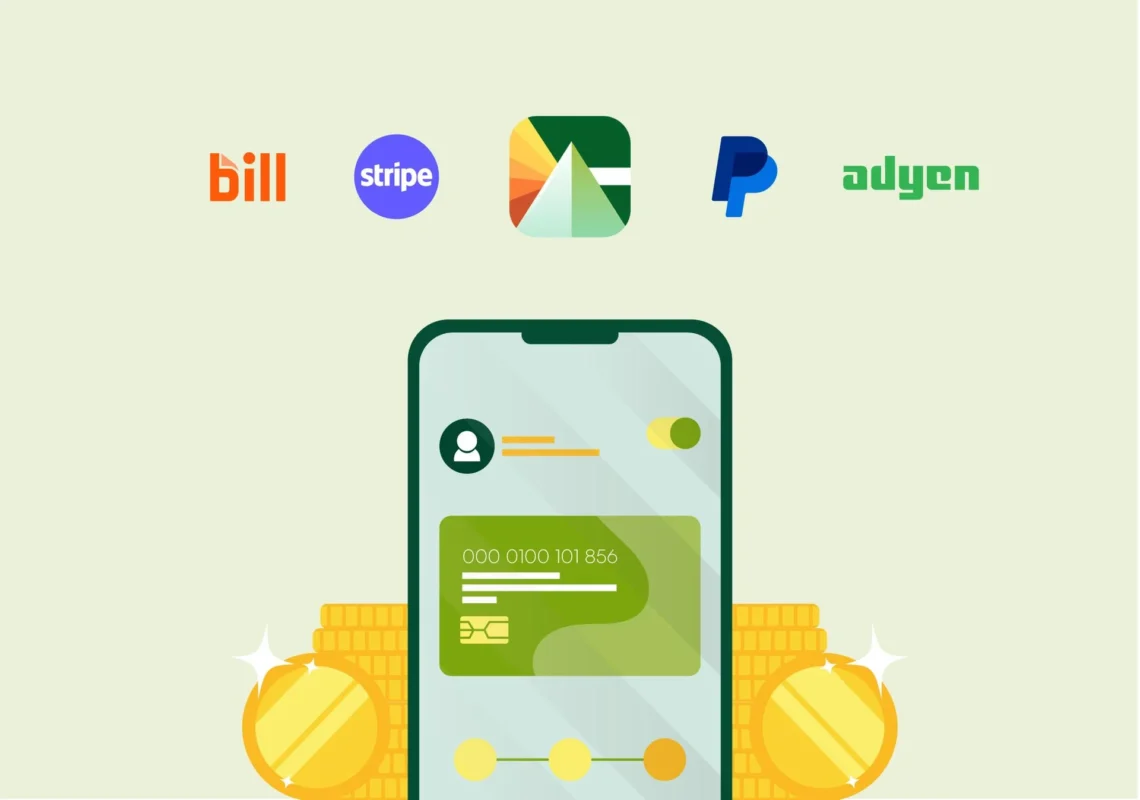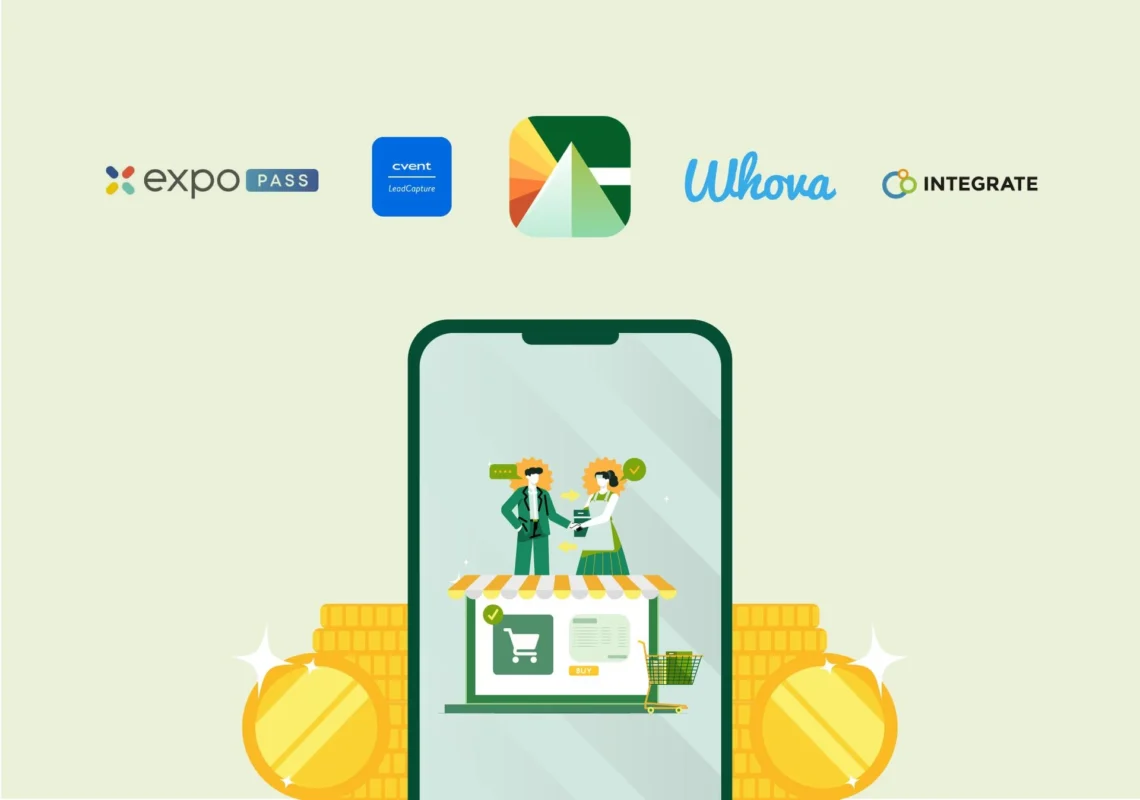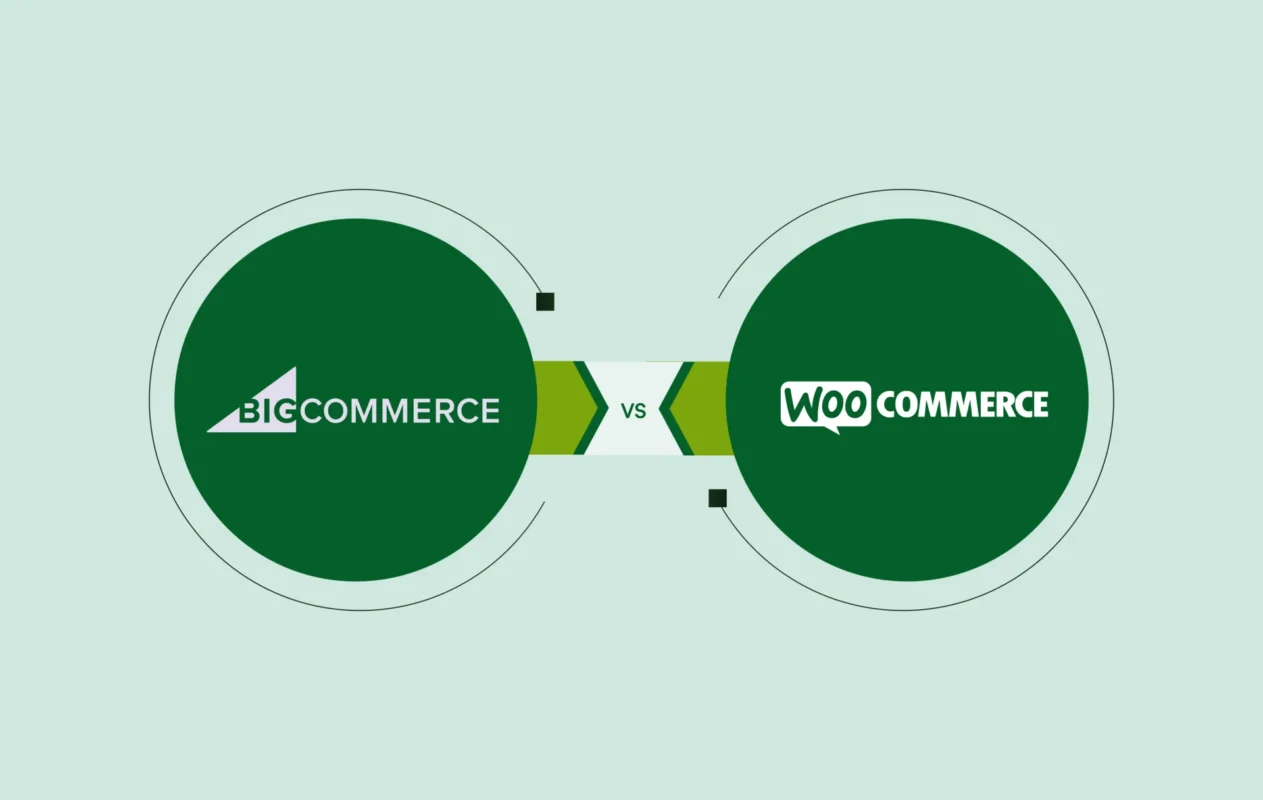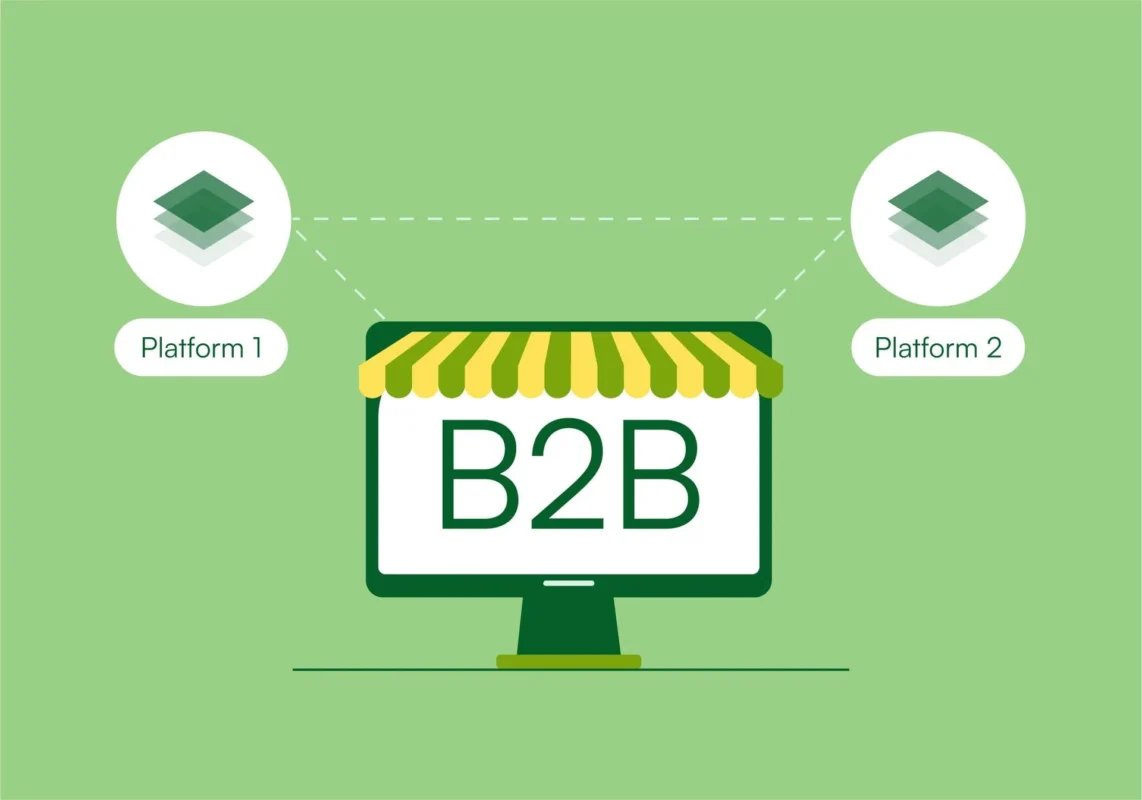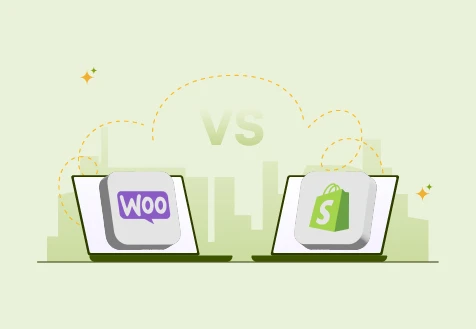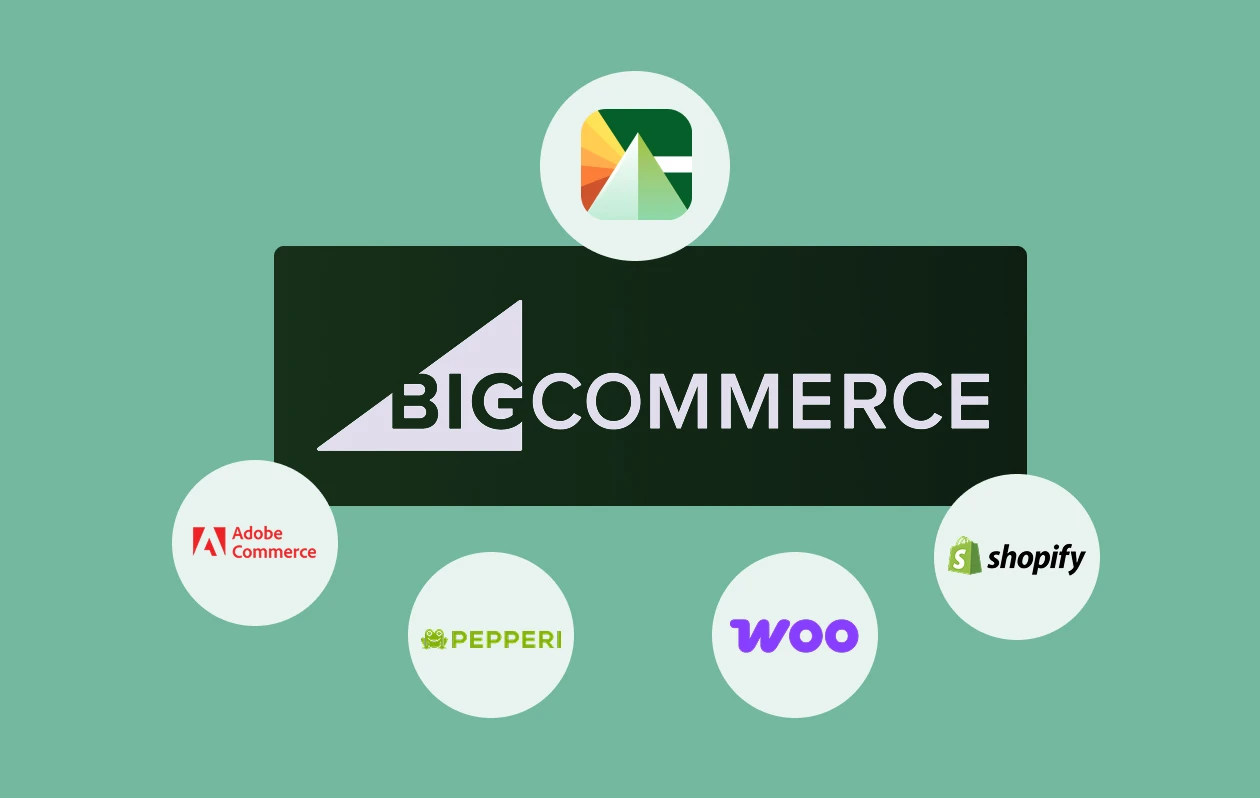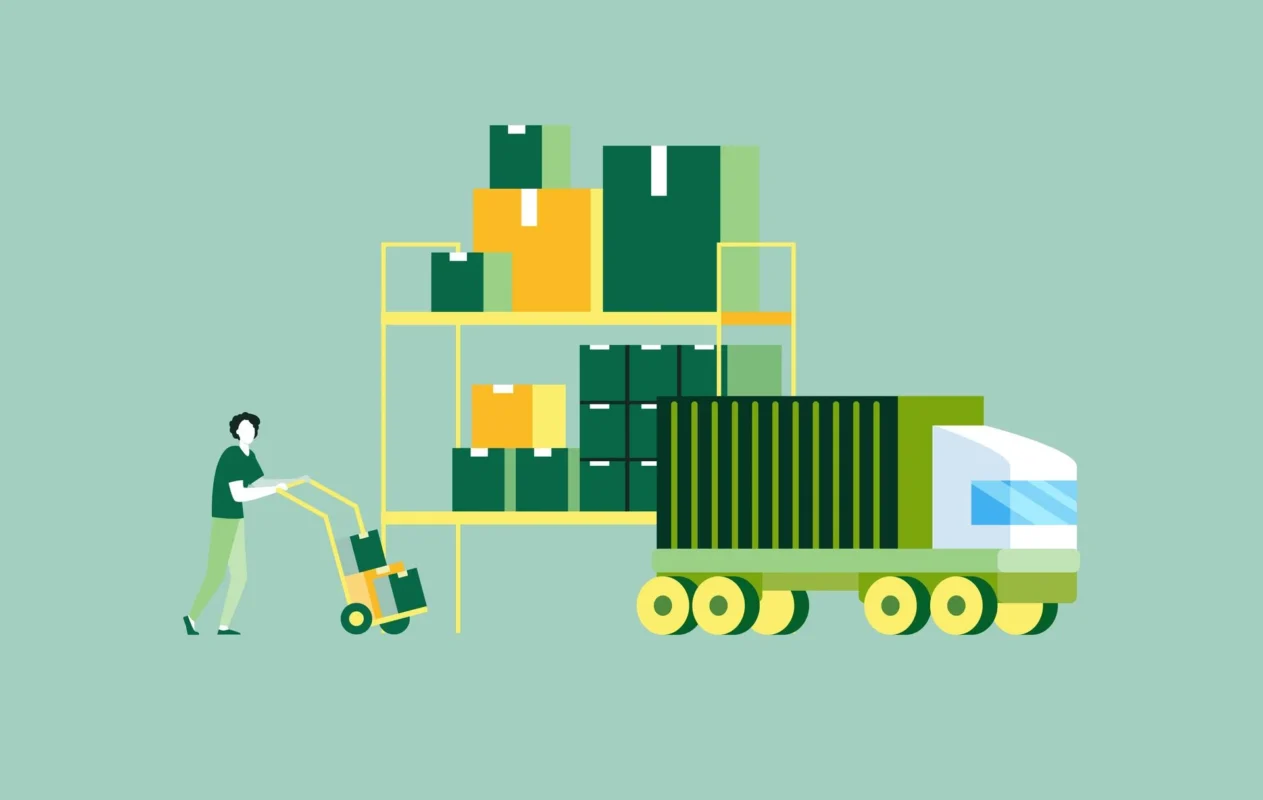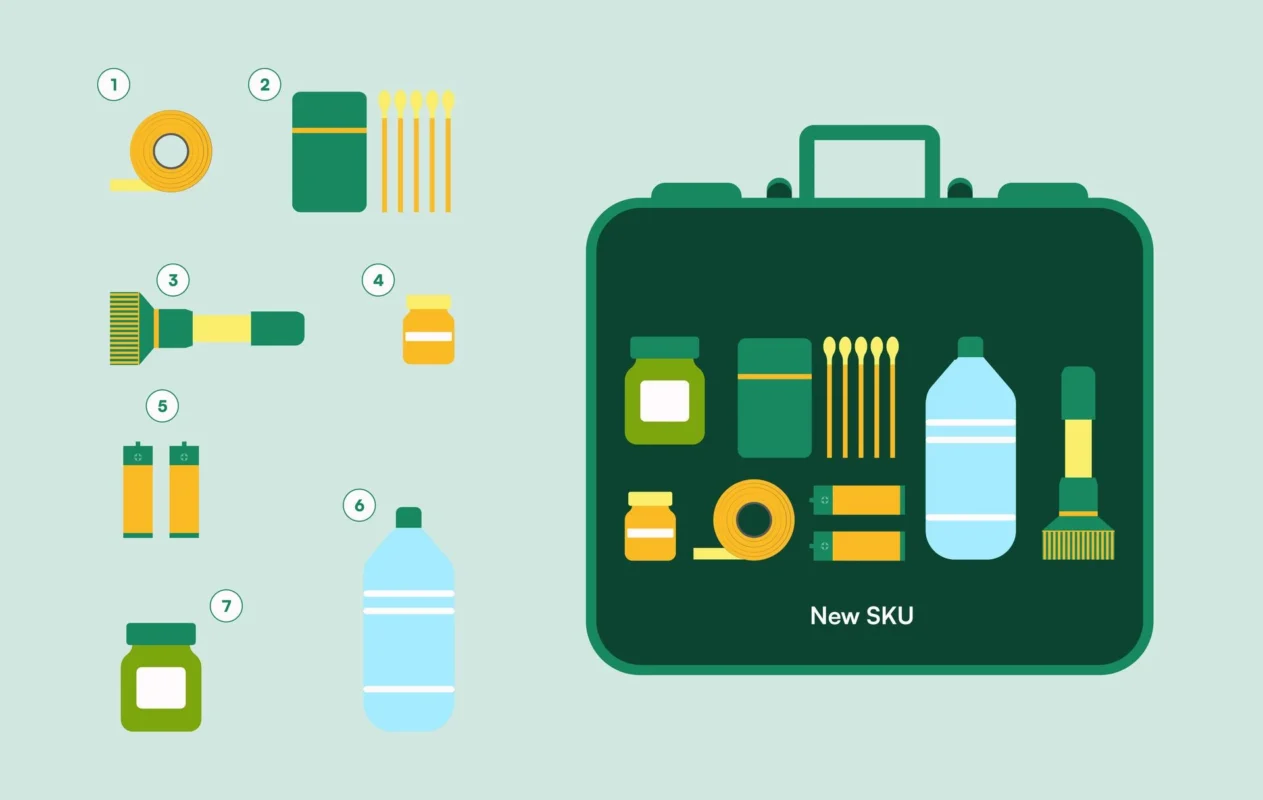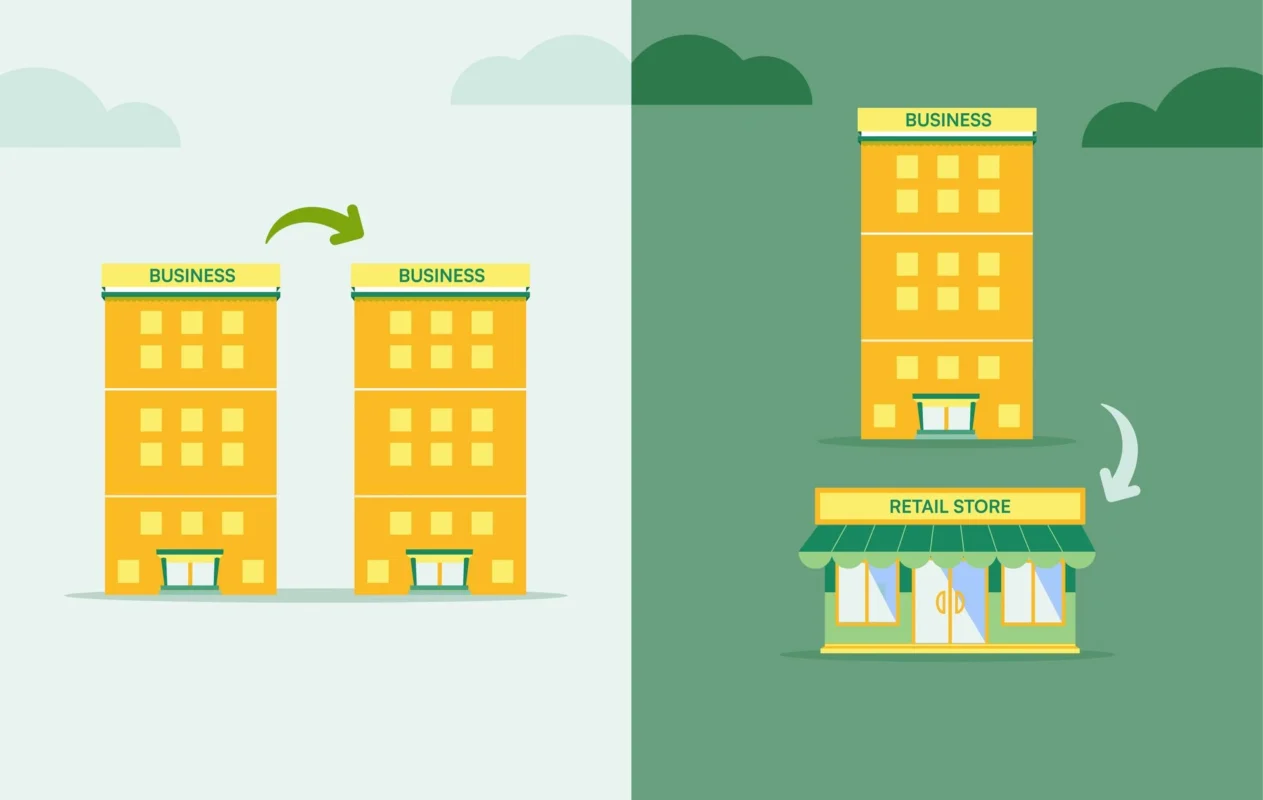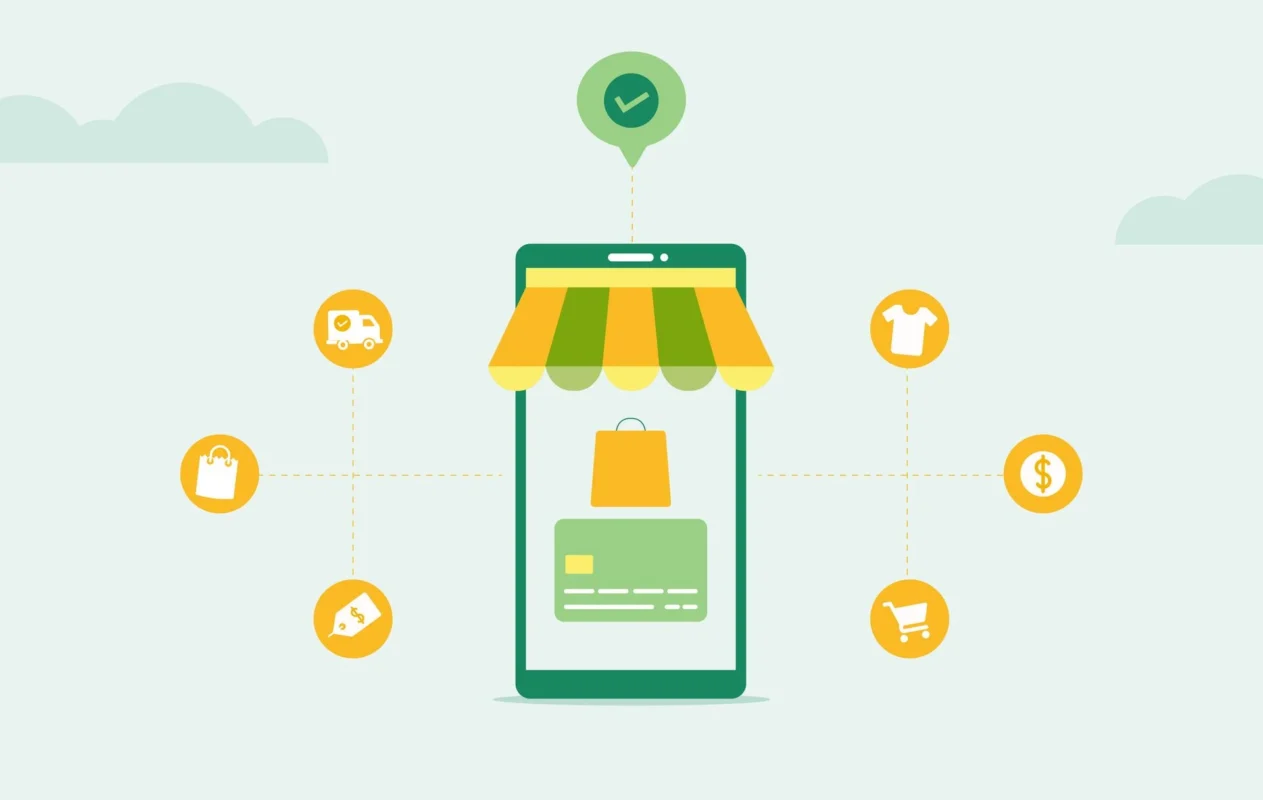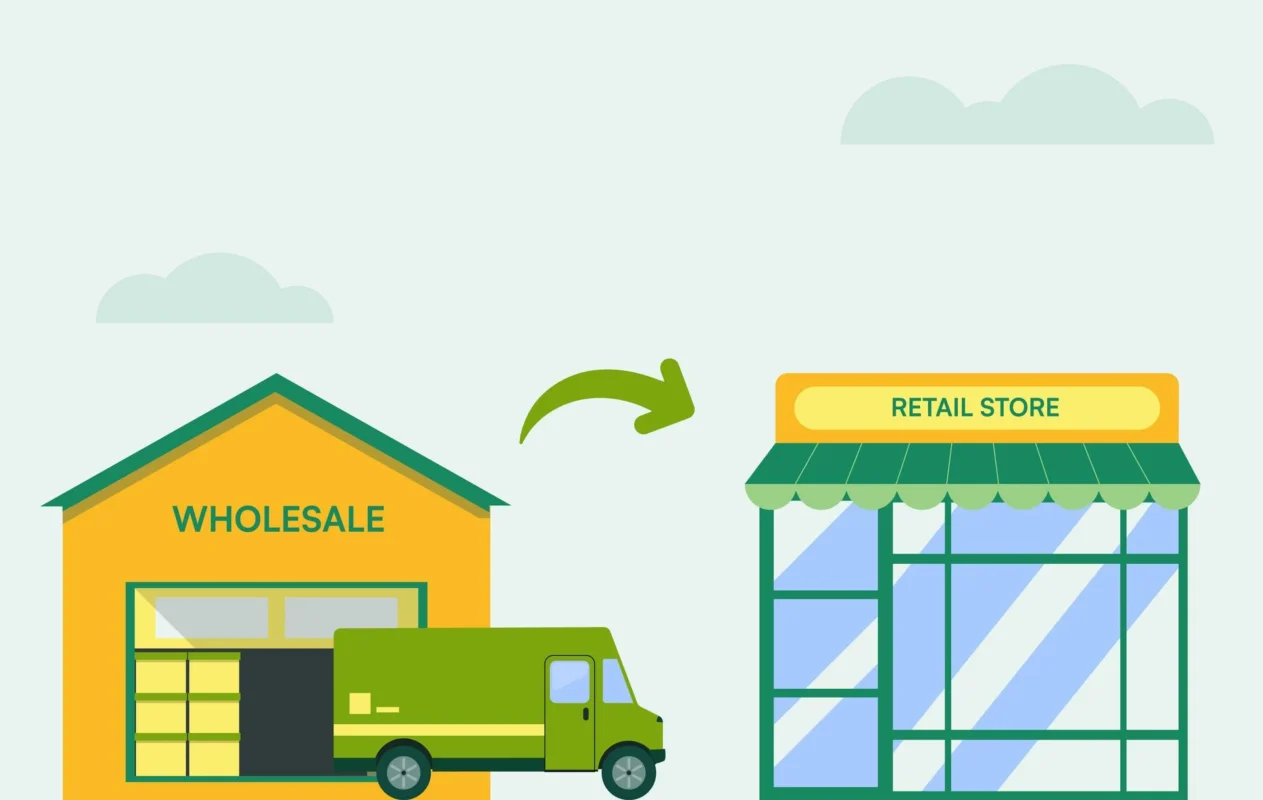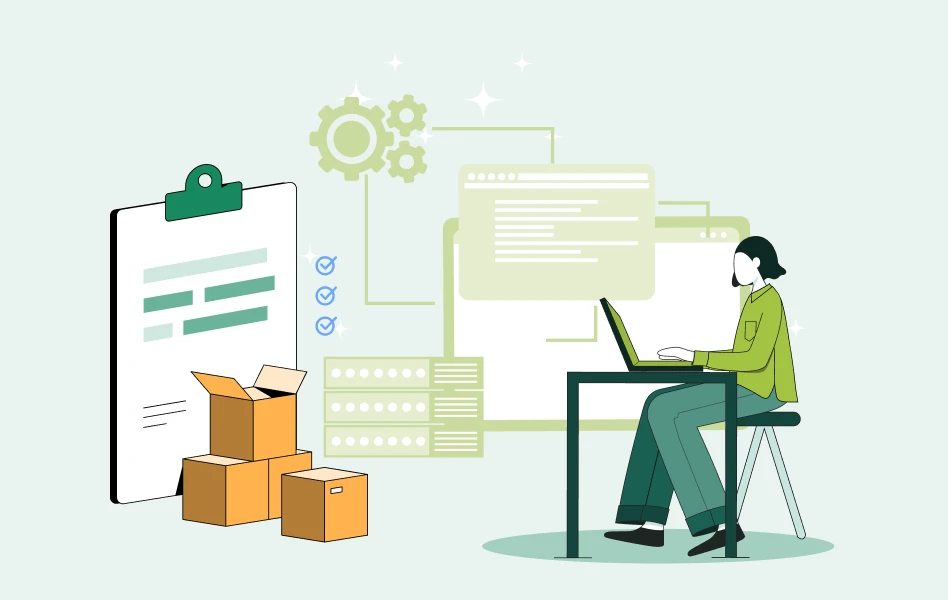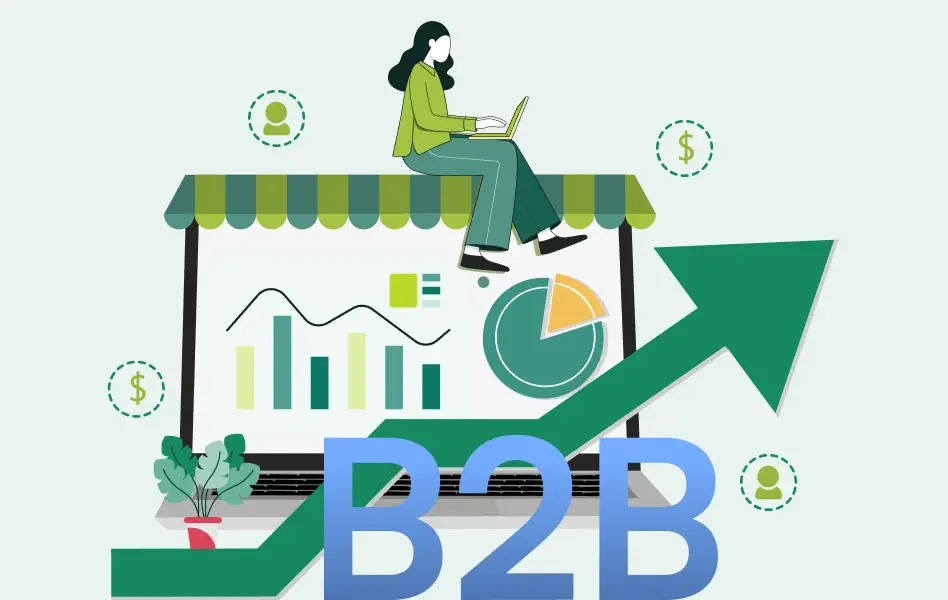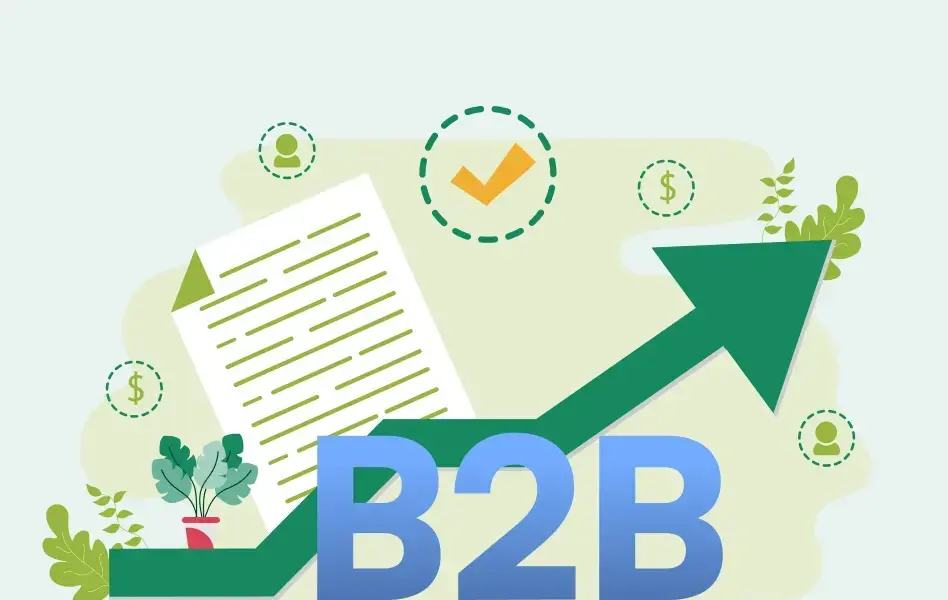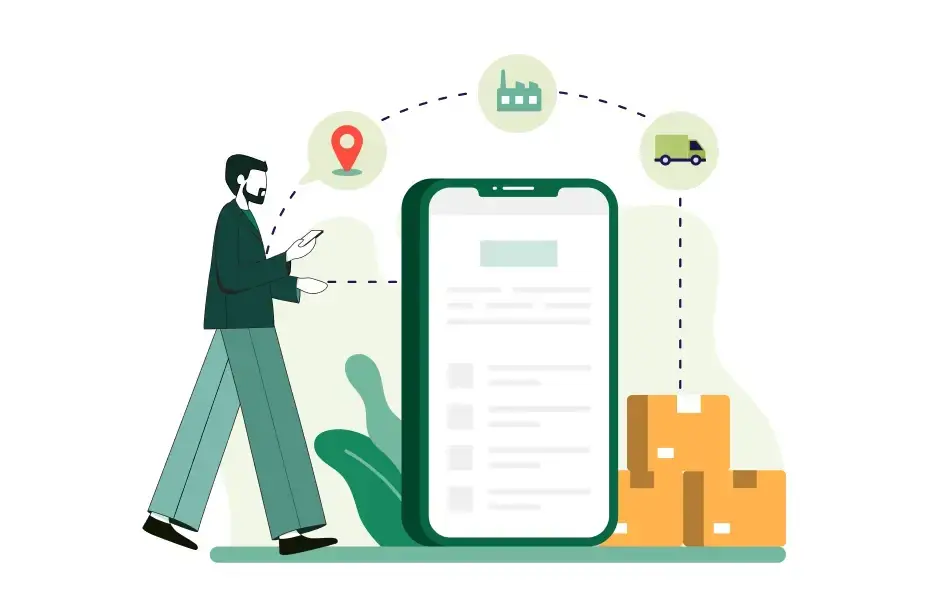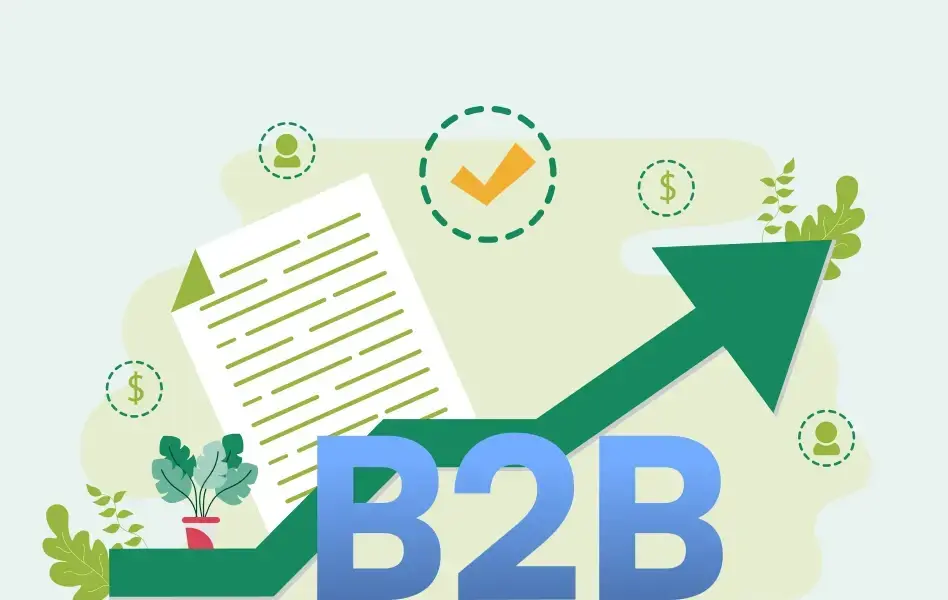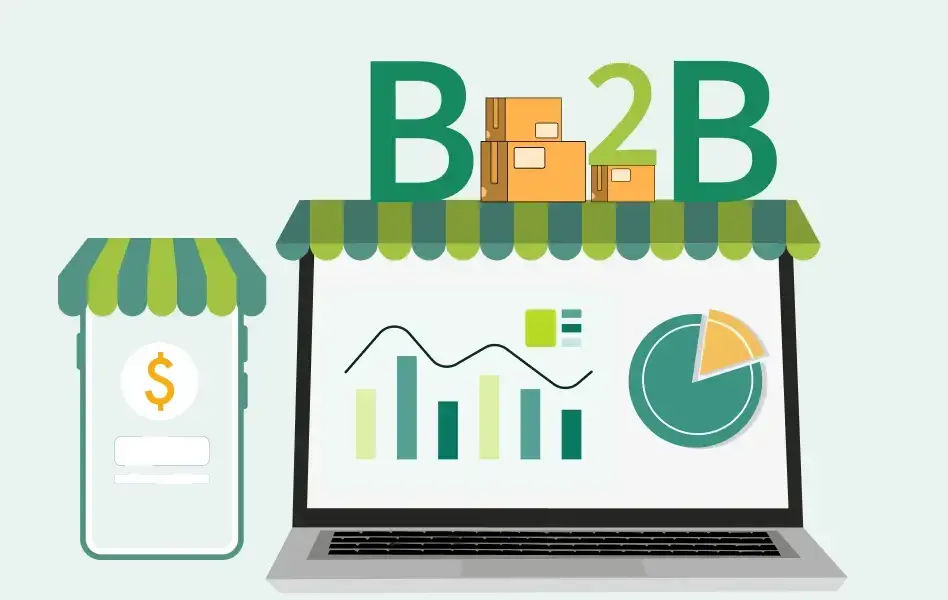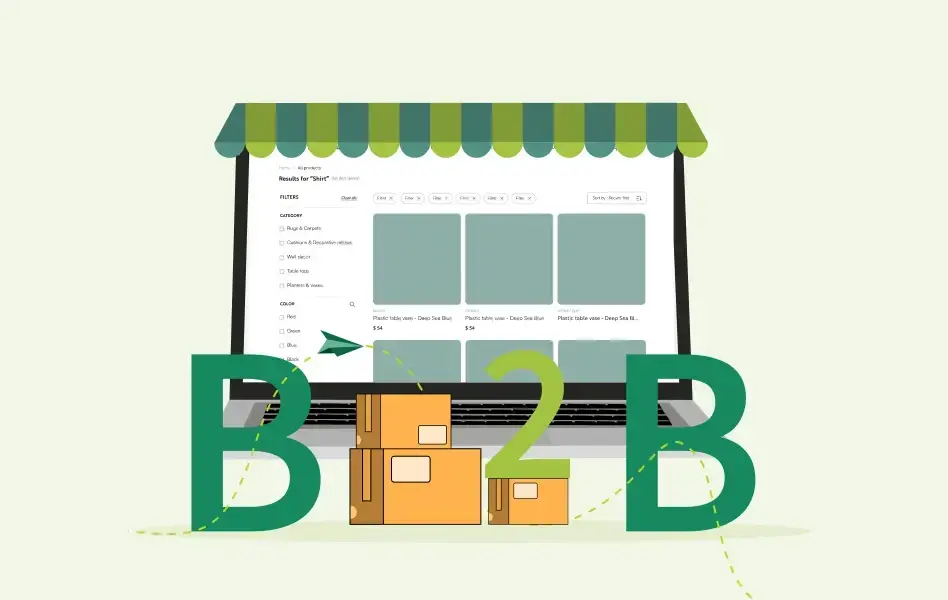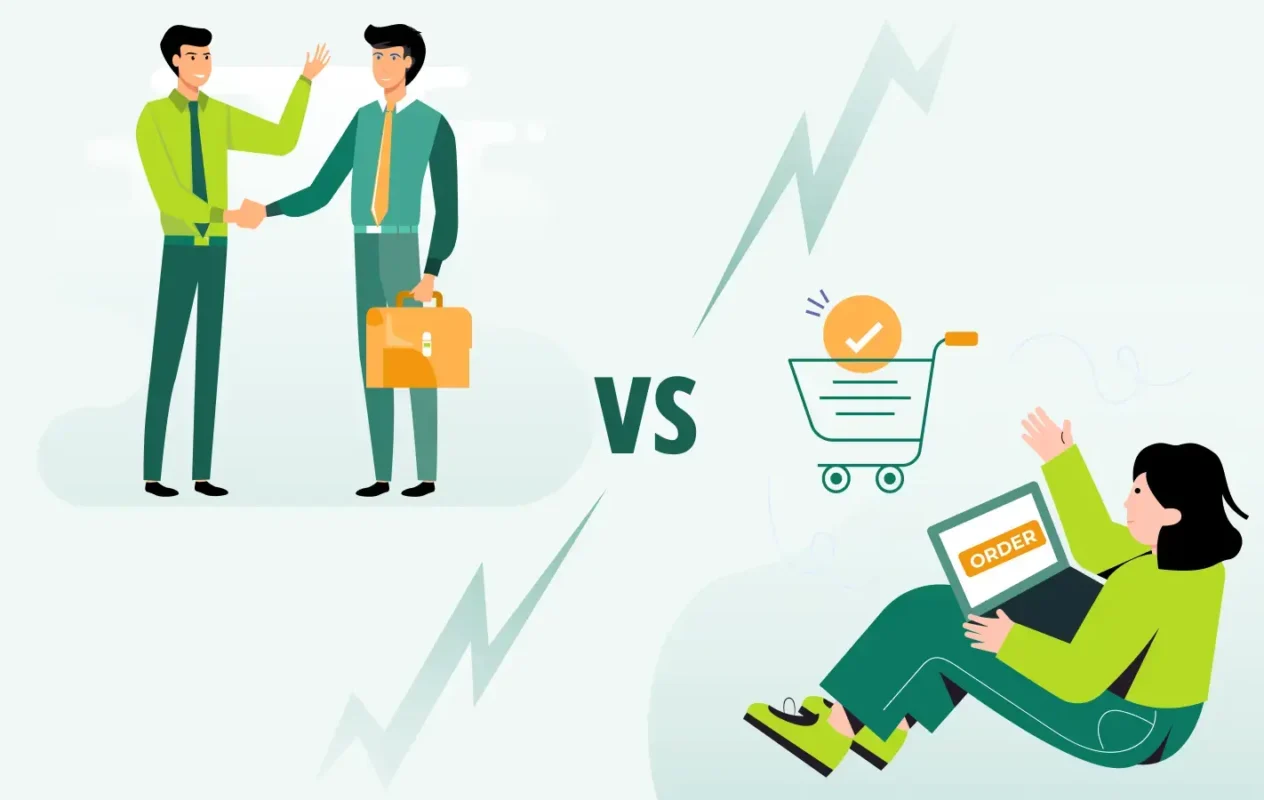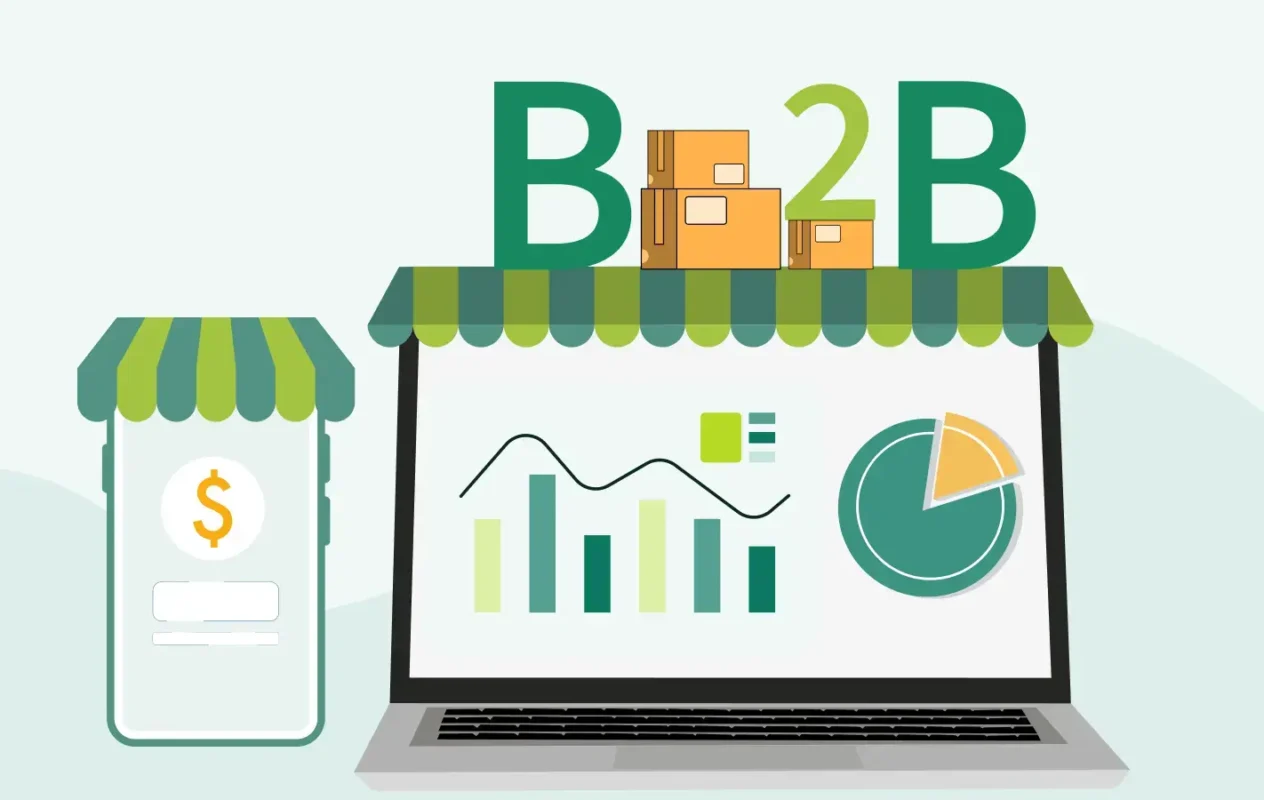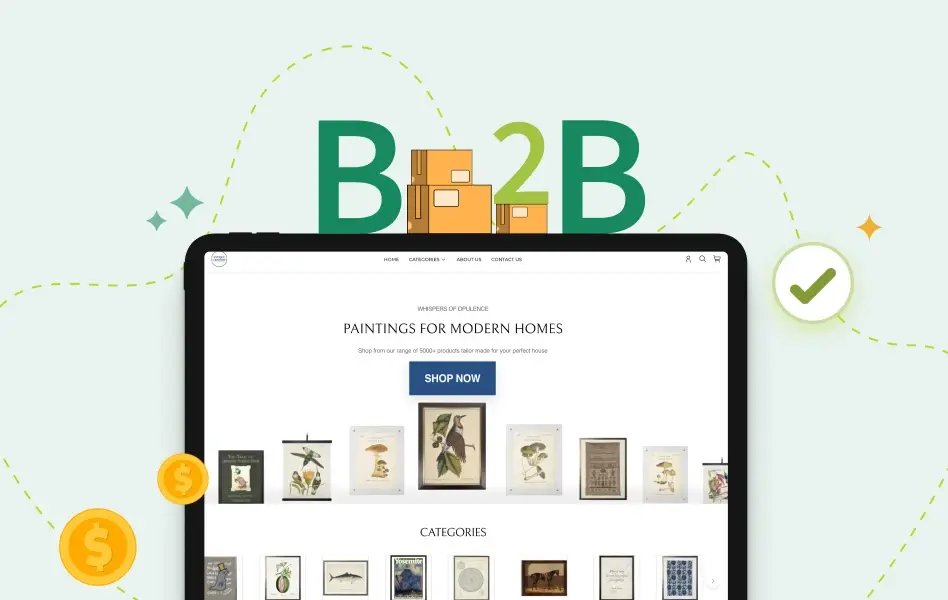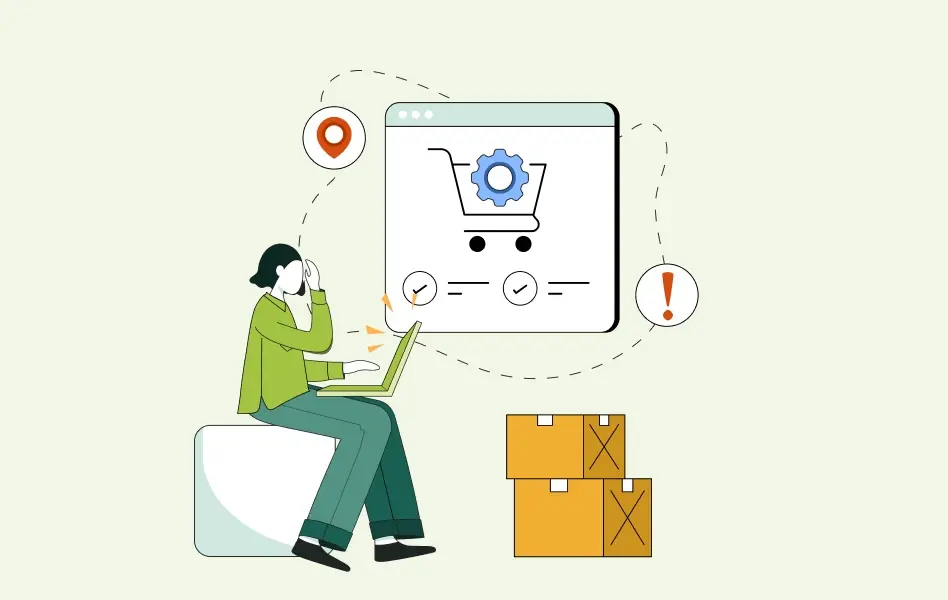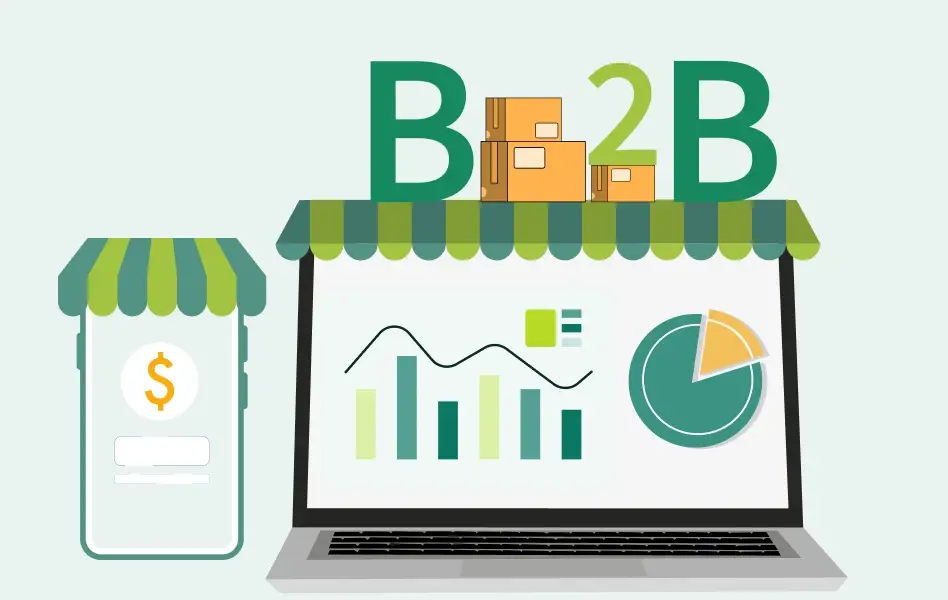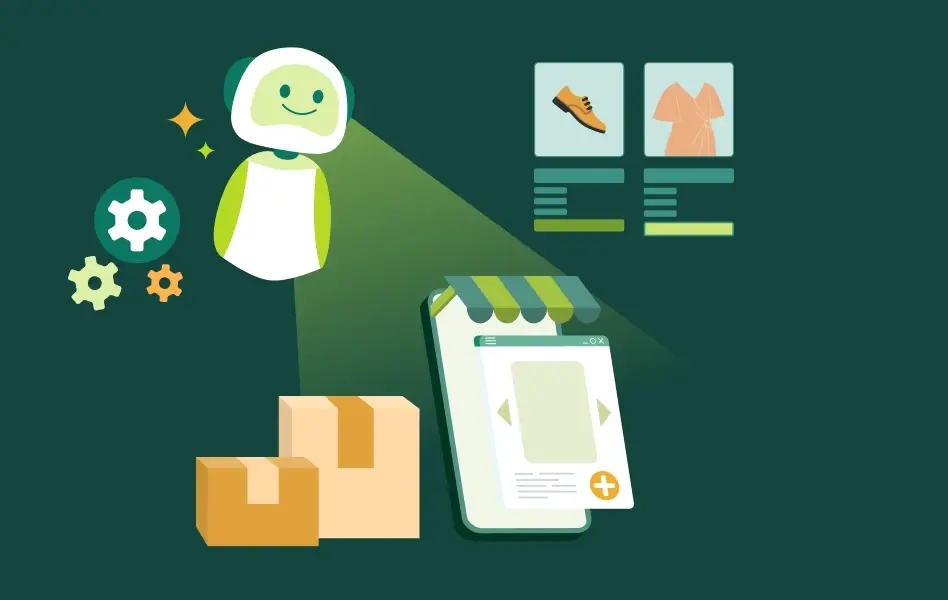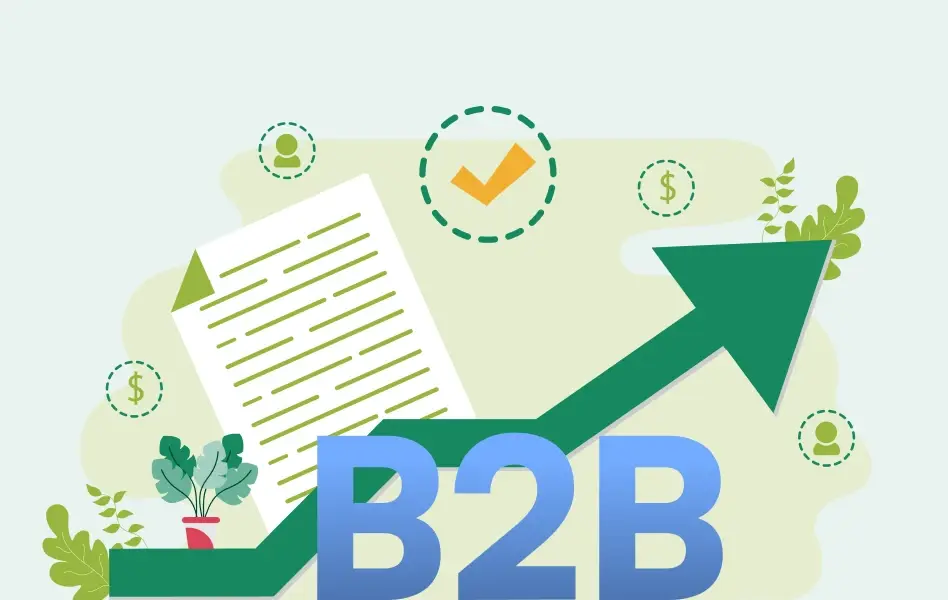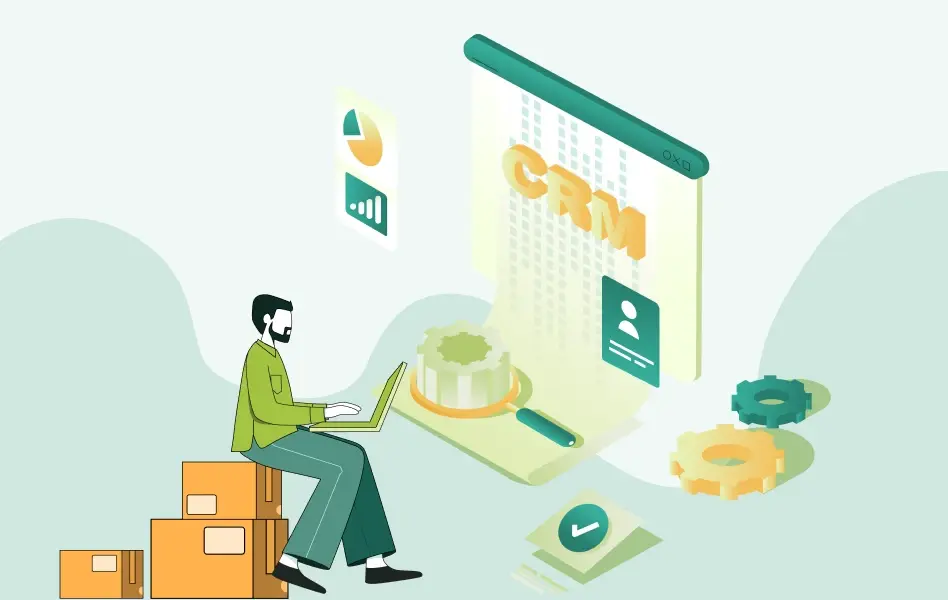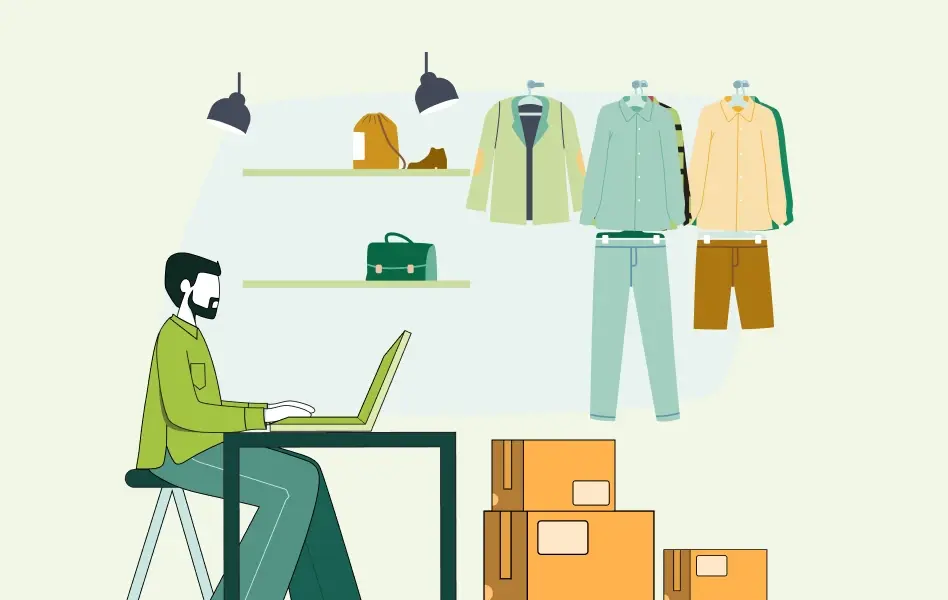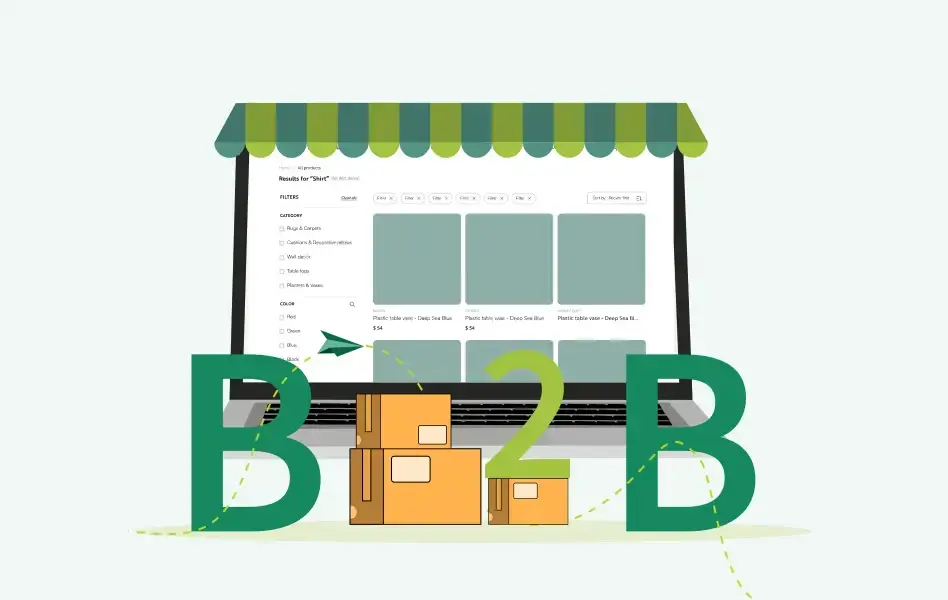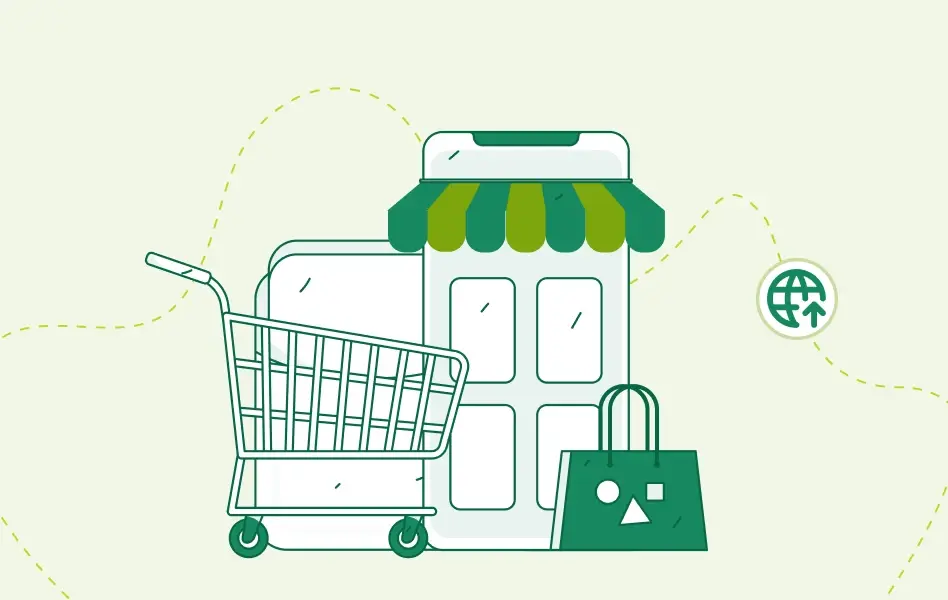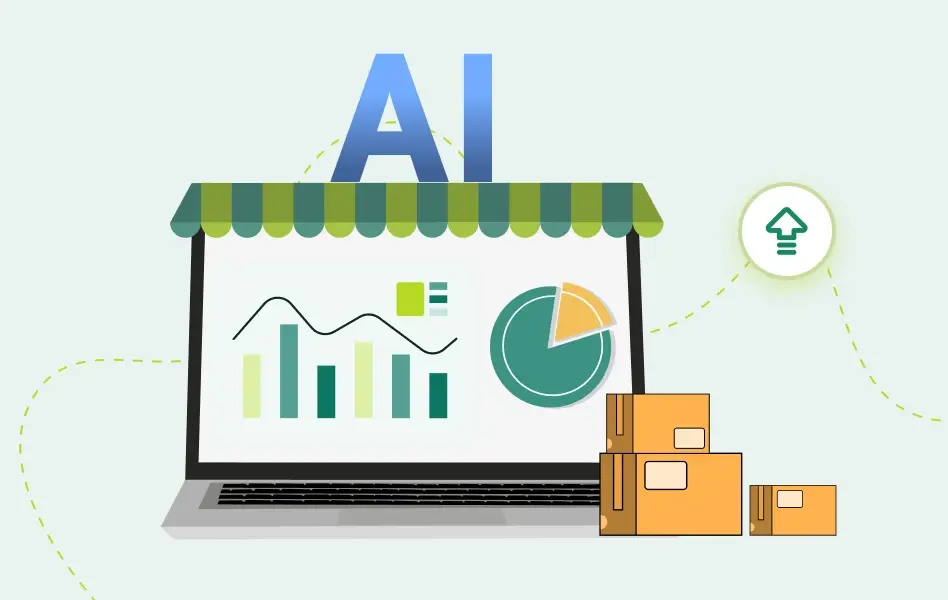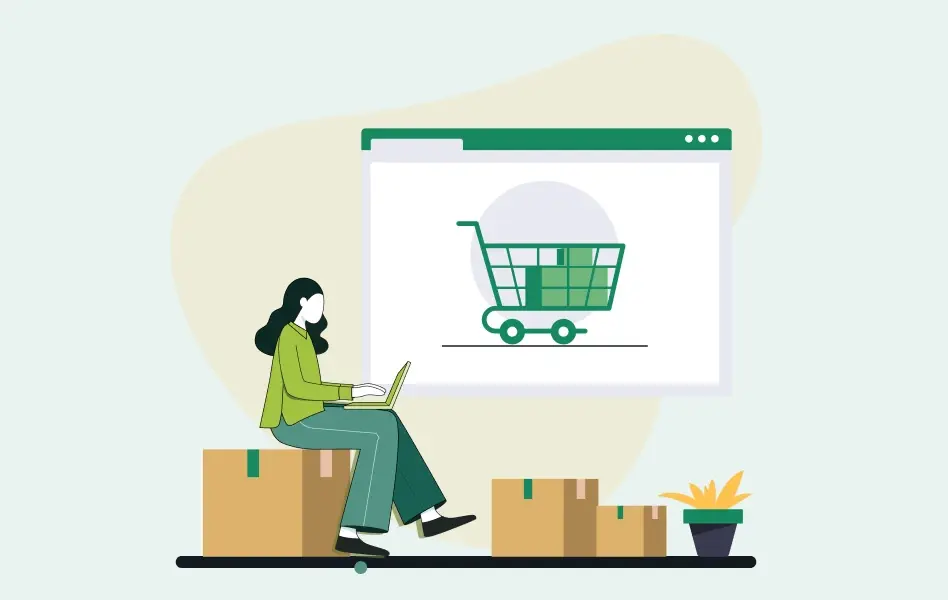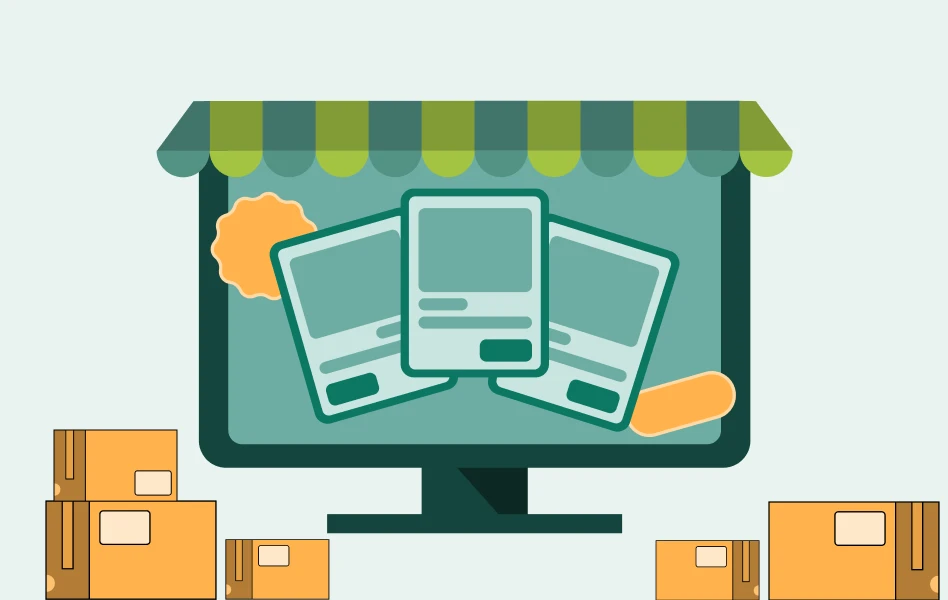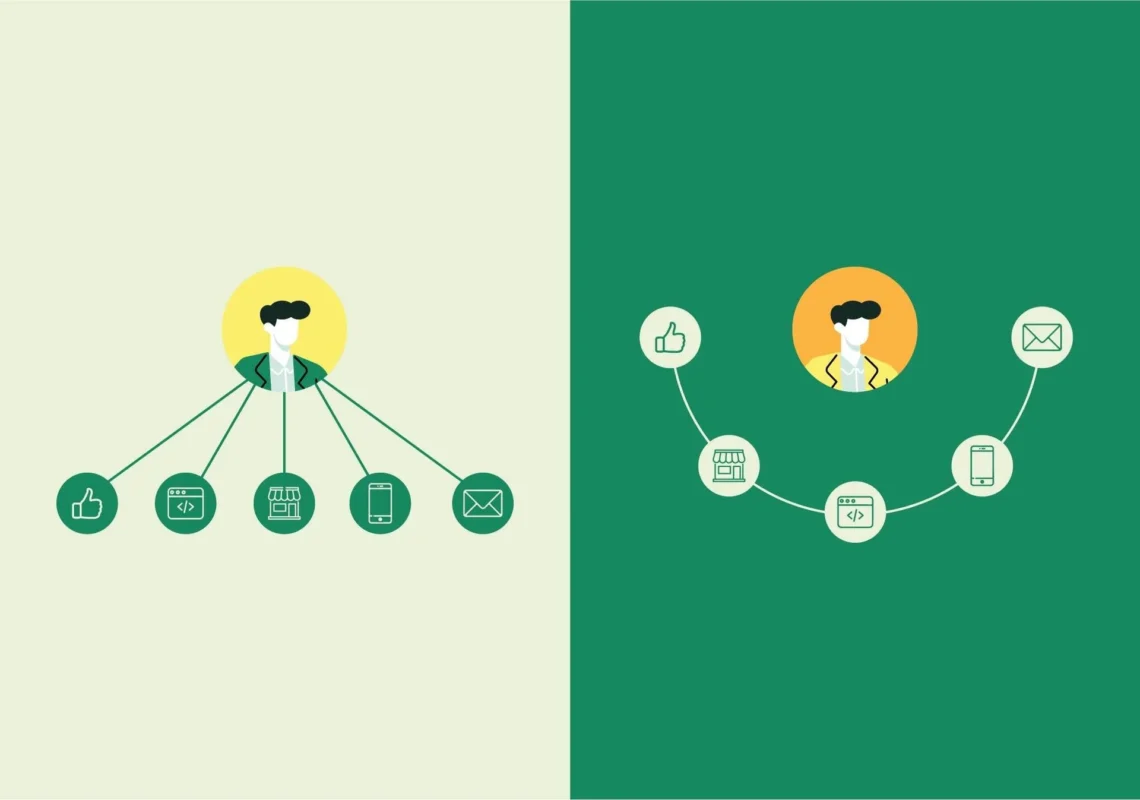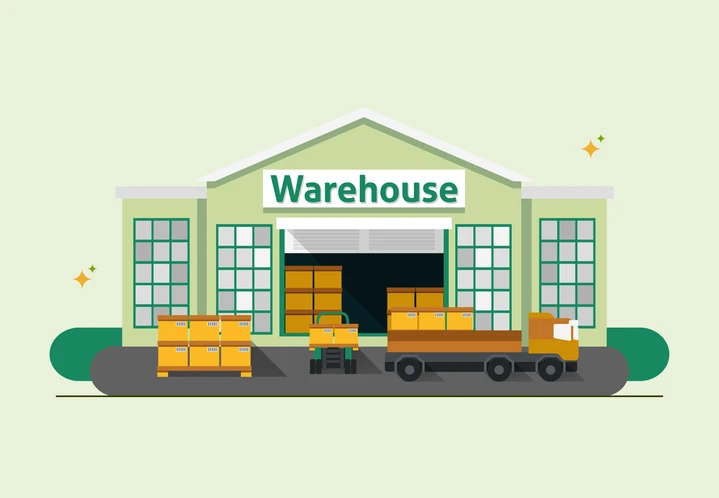Contents
- 1 Why should you go wholesale to retail?
- 2 How to know if you’re ready for wholesale to retail?
- 3 Your 4-step process to approach retail stores successfully
- 4 Common mistakes to avoid in wholesale to retail
- 5 Final checklist: Are you ready to sell wholesale to retail?
- 5.1 1. Product readiness
- 5.2 2. Pricing and margin strategy
- 5.3 3. Sales and marketing materials
- 5.4 4. Retailer research and targeting
- 5.5 5. Outreach and communication strategy
- 5.6 6. Partnership and logistics operations
- 5.7 7. Technology and systems infrastructure
- 5.8 8. Post-sale relationship management
- 6 Power your wholesale-to-retail journey with WizCommerce
- 7 Frequently asked questions (FAQs) on going wholesale to retail
- 7.1 How do you reach out to stores to sell your products?
- 7.2 Can a business be both a wholesaler and a retailer?
- 7.3 What is the key difference between wholesale and retail selling?
- 7.4 What should I include in my wholesale catalog or line sheet?
- 7.5 Can I sell both wholesale and retail at the same time?
- 7.6 What sales materials should I prepare before contacting retail stores?
The wholesale to retail transition represents one of the most effective growth strategies for established wholesale businesses. However, many attempts fail due to inadequate preparation, wrong messaging, and lack of retail-specific systems.
Successful wholesale to retail expansion requires understanding that retail buyers operate differently than distributors. They evaluate suppliers based on brand presentation, margin potential, and operational reliability, not just retail price and availability.
This guide provides the proven methodology used by wholesale businesses to secure retail partnerships systematically, including specific templates, qualification frameworks, and technology requirements that turn prospects into profitable long-term accounts.
Why should you go wholesale to retail?
Retail expansion delivers immediate financial advantages that wholesale-only businesses miss. By working directly with retailers, you eliminate distributor markups while building diversified revenue streams that reduce dependence on large wholesale accounts.
Key benefits:
- Higher profit margins through direct partnerships
- Geographic expansion without infrastructure investment
- Improved cash flow via smaller, frequent orders
- Premium positioning in specialty market segments
- Direct brand visibility to end customers
Beyond revenue growth, retail partnerships provide strategic advantages that strengthen your competitive position. You gain unfiltered market feedback that distributors rarely share, while creating controlled environments for testing new products before broader wholesale launches.
How to know if you’re ready for wholesale to retail?
Before investing time and resources in retail partnerships, use this diagnostic framework to identify your current position and readiness gaps. Focus on these three critical areas that determine retail expansion success.
The market readiness assessment
You walk into your ideal retail partner’s store and evaluate where your wholesale products would fit.
Product-market fit questions:
- Do similar products already exist on their shelves? (This is actually good – it proves customer demand)
- What price points are successful products selling at in this environment (Helps assess the suggested retail price)?
- How does your product quality and presentation compare to what’s currently there?
- Would your product solve a problem or fill a gap you observe?
Demand validation test:
- Have any retailers ever approached you about carrying your products?
- Do your current wholesale customers resell to consumers successfully?
- Have you received inquiries from end consumers asking where to buy your products?
- Are there online reviews or social media mentions of people wanting retail access?
Competitive landscape reality:
- Who are the 2-3 main suppliers retailers currently use in your category?
- What are their obvious weaknesses or gaps in service/product offering?
- How would you position against them – better quality, pricing, service, or innovation?
- Can you clearly explain why a retailer should choose you in one sentence?
The operational reality test
A retail buyer wants to start with a $5,000 initial order and expects weekly reorders of $2,000-3,000. Can you handle this?
Critical questions:
- What’s your average order size from existing wholesale customers?
- Do you have minimum order requirements that would exclude typical retail orders?
- Can your current staff handle 20% more order processing without compromising service?
Quality control check: Think about your last 50 orders. How many had quality issues requiring replacement or credit? If you can’t answer with specific data, you’re not ready for retail partnerships.
Packaging reality check: Visit your ideal retail partner’s store. Does your packaging look professional enough to sit next to competing products? Would a consumer pick up your product based on packaging alone?
The technology capability assessment
A retail prospect asks, “Can you send me a digital catalog with current pricing and availability? I need to review it with my team this week.”
Critical capabilities test:
- Can you generate a professional-looking catalog within 24 hours?
- Does it include real-time inventory levels?
- Can you customize pricing for specific prospects?
- Do you manually create quotes, or do you have automated systems?
System integration reality:
- Is your inventory management updated in real-time across all channels?
- Can you easily segment customers for different pricing tiers?
- Do you have professional presentation tools, or are you using basic spreadsheets?
If you answered “no” to more than one question, technology limitations will hamper your retail expansion efforts. If you’re manually creating these materials, platforms like WizCommerce can automate catalog generation, inventory synchronization, and customer-specific pricing, turning a 2-day manual process into a quick automated one.
For a comprehensive evaluation of all readiness factors, refer to our detailed checklist toward the end of this blog post that covers every aspect of retail expansion preparation.
Now that you’ve assessed your readiness for retail expansion, it’s time to move from evaluation to execution.
Your 4-step process to approach retail stores successfully
This methodology transforms random outreach into systematic partnership development. Each step builds on the previous to maximize success probability and minimize wasted effort.
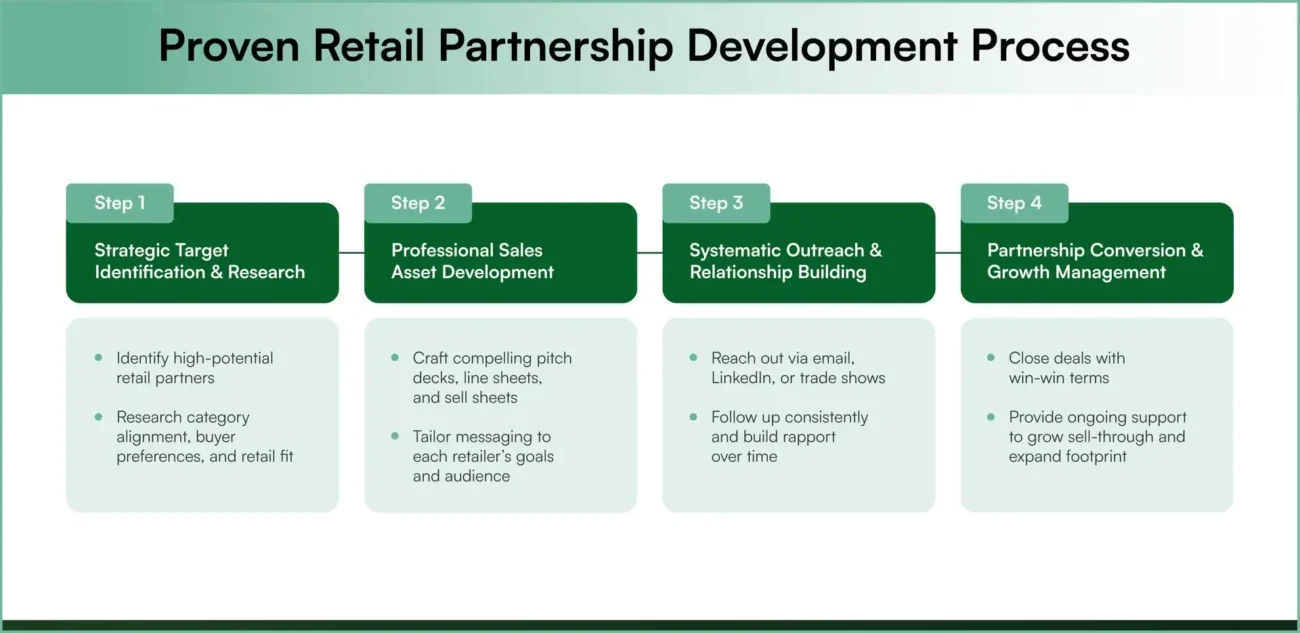
Step 1: Find and research your target stores
Strategic targeting focuses effort on retailers with the highest success probability. Random outreach wastes resources and damages your market reputation.
Market segmentation and opportunity analysis
Start with demographic targeting by identifying geographic markets where your products have proven demand. Analyze population density, income levels, and shopping behaviors that align with your ideal end customers. Focus initially on markets within your existing distribution capabilities to control logistics costs and enable relationship building.
Next, competitive landscape mapping reveals gaps where your business can provide superior value. Research existing suppliers serving your target retailers and document competitor weaknesses that become your differentiation opportunities.
Retailer qualification criteria
Use these specific criteria to identify high-potential targets:
| Qualification factor | What to evaluate | Why it matters |
| Financial stability | Credit ratings, payment history, business longevity | Ensures reliable partnerships and payments |
| Growth potential | Store count, expansion plans, market position | Indicates long-term partnership opportunity |
| Category alignment | Product mix, customer demographics, brand positioning | Determines product-market fit |
| Geographic coverage | Location accessibility, logistics efficiency | Affects operational costs and relationship building |
| Market positioning | Brand strategy, pricing tiers, customer segments | Ensures compatibility with your brand |
Once you’ve identified high-potential targets, create comprehensive records including decision-maker contact details, store demographics, current supplier relationships, seasonal buying patterns, and interaction history. Prioritize prospects using weighted criteria- market opportunity size, strategic fit, competitive position, relationship potential, and financial stability.
WizCommerce’s lead scoring feature automatically analyzes your CRM data, purchase history, and market trends to identify which retail prospects have the highest probability of becoming successful partners, saving hours of manual research.
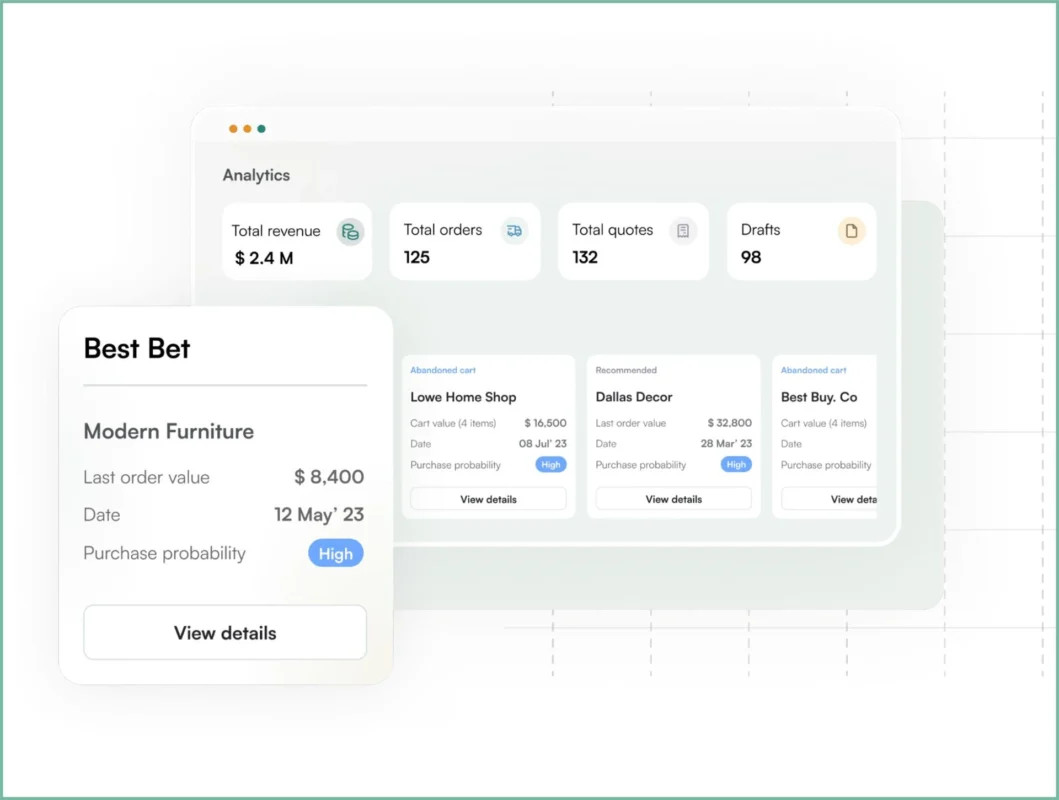
Step 2: Prepare your sales materials
Many wholesale businesses lose retail opportunities because their catalogs look outdated or unprofessional compared to competitors. Professional B2B platforms can automatically generate branded catalogs with real-time inventory, but the key is ensuring your materials reflect the same quality standards as your products.
Digital catalog development essentials
Structure catalogs for retail buyer decision-making by leading with best-selling products, organizing by logical retail categories, and including clear pricing with volume discounts. Modern retail buyers expect interactive functionality including real-time inventory status, instant quote generation, personalized pricing, and offline access for trade shows.
Professional standards checklist:
- High-resolution product photography with retail context
- Professional graphic design reflecting quality positioning
- Clear typography and intuitive navigation
- Branded templates maintaining consistency across materials
- Mobile-responsive design for tablet presentations
Advanced B2B platforms like WizOrder can streamline this process with professional digital catalogs, AI-powered product search and recommendations, custom collections for different retail segments, and integrated quote generation capabilities.
Pricing documentation framework
| Pricing component | What to include | Buyer benefit |
| Base wholesale prices | Volume discount tiers, minimum order quantities | Clear wholesale cost structure understanding |
| Payment terms | Industry-standard terms, early payment discounts | Cash flow planning capability |
| Shipping policies | Shipping cost allocation methods, delivery timeframes | Total cost calculation |
| Seasonal pricing | Promotional opportunities, peak season adjustments | Revenue planning and optimization |
Value proposition development
Address specific retail buyer concerns by explaining how your products solve customer problems, what differentiates you from current suppliers, and what support services you provide. Build credibility through customer testimonials, sales performance data, industry certifications, and case studies from successful partnerships.
Key points:
- Focus on retailer benefits, not just product features
- Provide market demand evidence and sales velocity data
- Include marketing materials and training support offerings
- Demonstrate partnership value beyond product supply
Step 3: Make contact and pitch your product
Professional outreach builds relationships rather than just pushing products. Strategic persistence demonstrates value while respecting buyer time and priorities.
Communication sequence design
Develop a systematic approach with initial contact focusing on value assessment, follow-up providing social proof, meeting requests with clear agendas, presentation delivery with decision timelines, and post-meeting follow-up maintaining momentum.
Research optimal timing including industry buying seasons, retailer-specific decision patterns, economic conditions, and competitive windows.
The 21-day systematic outreach framework:
Week 1: Initial contact & value assessment
- Day 1 – Opening email: Send personalized messages highlighting your retailer research and potential partnership fit. Focus on one specific opportunity you identified during your store analysis.
- Day 7 – Social proof follow-up: Share a relevant customer testimonial or case study from a similar retailer. Include specific results: “ABC Retailer increased their [category] sales by [amount] after adding our line.”
Week 2: Meeting request & professional engagement
- Day 14 – Direct outreach: Make a phone call or send a LinkedIn message requesting a brief meeting. Use a specific agenda: “15-minute call to discuss [specific opportunity] and share how [similar retailer] achieved [specific result].”
Week 3: Presentation & follow-through
- Day 18 – Professional presentation: Conduct structured 25-minute presentation with discovery focus and clear next steps.
- Day 19 – Meeting summary: Send thank you email recapping discussion points, proposed solutions, and agreed timeline.
- Day 21 – Momentum check: Follow up on timeline discussed: “Any questions before we move forward with [specific next step]?”
Sample outreach template
Subject: Partnership Opportunity – [Product Category] for [Store Name]
Hi [Buyer Name],
I’ve been researching retailers who excel at serving [specific customer segment] and [Store Name] consistently appears in my analysis. Your focus on [specific strength] aligns perfectly with our [product category] customer base.
We’ve helped similar retailers through our [brief value proposition]. Our products address a gap I noticed in your current [product category] selection.
I’d appreciate 15 minutes to learn about your buying priorities and share how we might add value. Are you available for a brief call this week, or would next week work better?
Best regards,
[Your name and title]
[Company and contact information]
Phone conversation framework with detailed scripts
Use this structured conversation flow to maximize your chances of securing a meeting:
- Opening: “Hi [Name], this is [Your Name] from [Company]. Thank you for taking my call. I know your time is valuable, so I’ll be brief. I’ve been researching retailers who excel at [specific area] and your store consistently came up as a leader in [specific strength].”
- Research demonstration: “I noticed you carry [specific products] and serve [customer demographic]. Your focus on [specific aspect] really caught my attention because it aligns perfectly with what we do. I also saw [recent news/expansion/achievement] – congratulations on that success.”
- Value hypothesis: “Based on what I’ve learned about [Store Name], I believe we could help you [specific benefit]. We work with similar retailers to [specific outcome], and I think there might be a good fit here because [specific reason related to their business].”
- Proof point: “For example, we recently helped [Similar Retailer] in [Location] increase their [specific metric] by [amount/percentage] through [brief explanation]. They started with a similar customer base and challenges to what you might be facing.”
- Request: “I’d love to show you exactly how this could work for [Store Name]. Would you be open to a brief 15-20 minute meeting this week where I can demonstrate our products and share the specific strategies we used with [Similar Retailer]? I can come to your retail outlet or we could do a video call – whatever works better for your schedule.”
Essential presentation slides for retail buyers
Retailers expect structured, professional presentations that respect their time while covering key decision factors. Use this 9-slide framework to create compelling presentations that balance discovery, demonstration, and clear next steps.
- Opening & agenda – Welcome, meeting overview, objectives
- Company overview – Credibility, experience, current retail partners
- Discovery questions – Understanding their business and challenges
- Product showcase – 3-4 hero products with benefits and features
- Pricing & terms – Wholesale pricing, minimums, payment terms
- Success story – Case study with specific results from similar retailer
- Partnership support – Marketing materials, training, ongoing assistance
- Next steps – Recommended trial order and timeline
- Q&A – Address questions and concerns
Step 4: Close the deal and start selling
Converting interest into partnerships requires structured negotiation, efficient onboarding, and ongoing relationship management that builds long-term value.
Partnership agreement essentials
| Agreement Element | Key Considerations | Mutual Benefits |
| Product pricing | Volume discounts, tier progression | Scalable partnership growth |
| Order minimums | Operational efficiency vs. accessibility | Balanced investment requirements |
| Payment terms | Industry standards, cash flow needs | Sustainable financial relationship |
| Territory rights | Exclusivity considerations | Market protection and growth |
| Marketing support | Cooperative promotional opportunities | Shared success investment |
Balance mutual interests through pricing that allows adequate retailer margins while maintaining profitability, order minimums that make operational sense, and return policies protecting both quality standards and retailer investment.
Onboarding checklist
Essential launch activities:
- Initial inventory recommendations based on store profile
- Staff training materials explaining product benefits
- Point-of-sale materials and merchandising guidance
- Order placement procedures and communication protocols
- Performance tracking and reporting setup
Comprehensive B2B platforms like WizCommerce can streamline this entire partnership lifecycle with automated onboarding workflows, omnichannel order processing that connects online and offline sales channels, efficient inventory management, and analytics that track partnership performance across all touchpoints.
Maintain partnership health through regular performance reviews, quarterly business assessments, proactive communication about new products and current market trends, and immediate response protocols for support needs.
Drive mutual success through sales data analysis, market intelligence sharing, collaborative marketing planning, and inventory optimization. Build on successful partnerships through additional product introductions, increased order volumes, referral generation, and geographic expansion opportunities.
Following this 4-step methodology provides a solid foundation for retail expansion success. However, even with the right framework, many wholesale businesses still struggle because they fall into predictable traps that undermine their efforts.
Understanding these common pitfalls is crucial because retail buyers have long memories and limited patience. A single mistake can eliminate future opportunities with a retailer and damage your reputation in the broader market.
Common mistakes to avoid in wholesale to retail
These critical errors derail most wholesale-to-retail attempts. Understanding and avoiding them significantly improves your success probability.
Inadequate market research and targeting
Generic outreach kills deals before they start. Retail buyers instantly recognize when suppliers haven’t researched their specific business model, customer base, or competitive challenges.
- Conduct deep-dive research into each retailer’s operations and competitive landscape
- Analyze their target demographics and market positioning before outreach
- Gather specific intelligence about their business challenges and needs
- Demonstrate genuine understanding of their unique requirements in all communications
- Customize every interaction to show you’ve invested time learning their business
Unprofessional sales materials and presentation
Amateur product photos (or worse, stock photos) and generic catalogs scream “unprofessional operations” to retail decision-makers. Poor presentation materials signal unreliable business practices and get suppliers eliminated immediately.
- Invest in professional, high-resolution product photography
- Create polished catalog designs that reflect quality and reliability
- Develop presentation materials that meet professional standards
- Ensure all marketing assets showcase your capabilities effectively
- Maintain consistent branding across all customer-facing materials
Pricing strategies incompatible with retail economics
Pricing without considering retailer margin requirements guarantees failure regardless of product quality. Retailers need higher markups to justify inventory investment and selling effort.
- Research typical retail margins in your product categories
- Structure pricing that enables profitable partnerships for both sides
- Factor in retailer profit requirements and business costs during pricing strategy development
- Consider market positioning and competitive pricing pressures
- Build pricing models that support long-term partnership growth
Insufficient follow-up and relationship management
One-and-done approaches kill retail relationships. Treating partnerships as simple transactions rather than ongoing business relationships ensures stagnation and eventual failure.
- Establish systematic relationship management processes
- Create regular communication schedules with key partners
- Provide proactive support and partnership development
- Identify and pursue growth opportunities continuously
- Maintain partnership health through consistent engagement
Technology limitations hampering professional operations
Manual processes and spreadsheet-based operations can’t handle retail partnership complexity. Service quality issues from inadequate systems damage relationships and credibility.
- Deploy modern technology platforms designed for multi-channel operations
- Implement systems that automatically handle retail complexity
- Ensure service excellence through reliable operational processes
- Eliminate manual bottlenecks that create service failures
- Choose solutions specifically built for wholesale-to-retail operations
Final checklist: Are you ready to sell wholesale to retail?
This comprehensive assessment evaluates your complete readiness for retail expansion and helps build your retail strategy. Each element builds toward sustainable partnership success.
1. Product readiness
- Product quality consistently meets retail standards with reliable defect management
- Sufficient production capacity to support additional retail accounts without compromising existing relationships
- Retail-ready packaging that supports shelf appeal and brand positioning
- Product samples prepared for demonstrations and quality evaluation
2. Pricing and margin strategy
- Wholesale pricing allowing substantial retailer markup while maintaining profitability
- Clear minimum order quantities appropriate for retail operations
- Transparent pricing documentation with volume discounts and payment terms
- Competitive analysis confirming market-appropriate pricing positions
3. Sales and marketing materials
- Professional digital catalog with real-time inventory and pricing capabilities
- Compelling value propositions addressing specific retailer challenges and opportunities
- Customer testimonials and case studies from successful partnerships
- Branded presentation materials reflecting professional standards and quality positioning
4. Retailer research and targeting
- Target market identification with specific retailer qualification criteria
- Prospect database with decision-maker contact information and business intelligence
- Competitive analysis identifying gaps and differentiation opportunities
- Prioritization framework focusing effort on highest-potential customers
5. Outreach and communication strategy
- Personalized messaging templates demonstrating retailer-specific research and understanding
- Systematic follow-up procedures maintaining professional persistence without becoming intrusive
- Professional presentation capabilities for meetings and product demonstrations
- Communication tracking and relationship management protocols
6. Partnership and logistics operations
- Partnership agreement templates addressing pricing, terms, and mutual expectations
- Onboarding procedures ensuring successful partnership launches and early wins
- Order processing and fulfillment systems handling retail complexity efficiently
- Customer service capabilities meeting retail partnership expectations
7. Technology and systems infrastructure
- Multi-channel management platforms supporting both wholesale and retail businesses
- Professional catalog creation and presentation tools
- Customer relationship management with retail-specific functionality
- Analytics and reporting capabilities tracking partnership performance and opportunities
8. Post-sale relationship management
- Regular communication schedules maintaining partnership health and growth
- Performance monitoring systems tracking mutual success and identifying improvement areas
- Marketing support capabilities helping retail partners succeed with your products
- Strategic planning processes for partnership expansion and development
Power your wholesale-to-retail journey with WizCommerce
Managing wholesale to retail expansion requires the right technology to handle complex partnerships while keeping operations running smoothly. WizCommerce provides an integrated platform built specifically for multi-channel wholesale businesses.
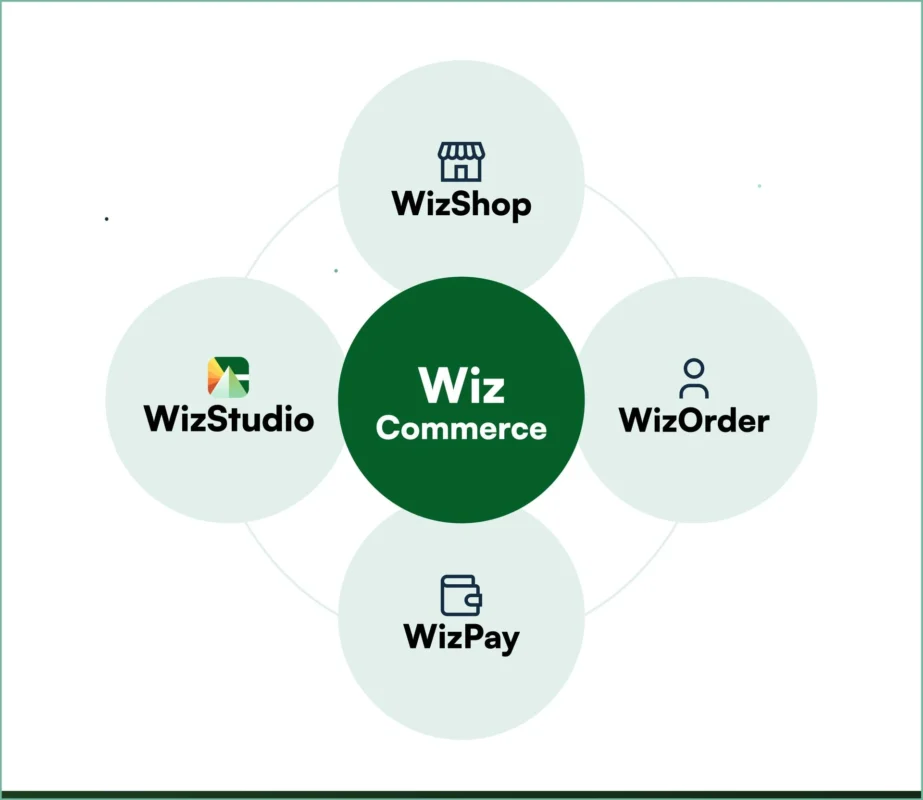
| Product | What it does | Key capabilities |
| WizShop B2B ecommerce platform | Creates professional online stores for your retail partners with secure login systems and custom pricing |
|
| WizOrder B2B order taking app | Transforms sales presentations with professional digital catalogs and streamlined ordering |
|
| WizAI AI-powered recommendations | Accelerates partnership growth through intelligent insights and automated recommendations |
|
| WizStudio AI marketing tool | Creates beautiful product images with AI at the click of a button for professional catalogs |
|
| WizPay B2B payment solution | Handles all retail payment needs with flexible options and comprehensive financial management |
|
Don’t let outdated systems and manual processes hold back your retail expansion. Join 1000+ businesses who’ve already accelerated their wholesale-to-retail growth with WizCommerce. Get in touch with us today!
Frequently asked questions (FAQs) on going wholesale to retail
How do you reach out to stores to sell your products?
Research each retailer thoroughly before contact. Understand their business model, customer base, and current suppliers. Create personalized outreach that demonstrates specific knowledge of their operations and clearly shows how your products solve their challenges. Use professional materials and follow up systematically with value-added content.
Can a business be both a wholesaler and a retailer?
Yes. Many businesses successfully operate both channels by managing potential conflicts through strategic differentiation. This includes using different product lines for each channel, establishing geographic territories, or creating exclusive arrangements that prevent direct competition with retail partners.
What is the key difference between wholesale and retail selling?
When it comes to wholesale vs retail, wholesale involves large quantities of goods, longer sales cycles, relationship-based negotiations, larger transactions, and B2B decision-making focused on business outcomes and operational considerations. Retail involves smaller quantities, shorter cycles, individual psychology, personal benefits, and consumer preferences. Wholesale requires understanding business operations and economies of scale while retail focuses on consumer behavior.
What should I include in my wholesale catalog or line sheet?
Include professional product photography with detailed specifications, clear wholesale pricing with volume discounts and minimum orders, available variations with suggested retail pricing, and compliance information. Modern catalogs should feature real-time inventory status, interactive search capabilities, and comprehensive contact and ordering information.
Can I sell both wholesale and retail at the same time?
Yes, with proper strategy. Successful multi-channel operations require the right pricing strategy that allows retail partners adequate margins, defined territories for each channel, transparent communication about your strategy, and sometimes different product lines to prevent direct competition with existing retail partners.
What sales materials should I prepare before contacting retail stores?
Prepare a professional digital catalog with high-quality images, comprehensive pricing sheets with terms and volume discounts, company overview highlighting relevant experience, customer testimonials and partnership case studies, product samples for demonstration, and clear ordering, shipping, and support information. Professional materials reflect your operational capabilities and build buyer confidence.






